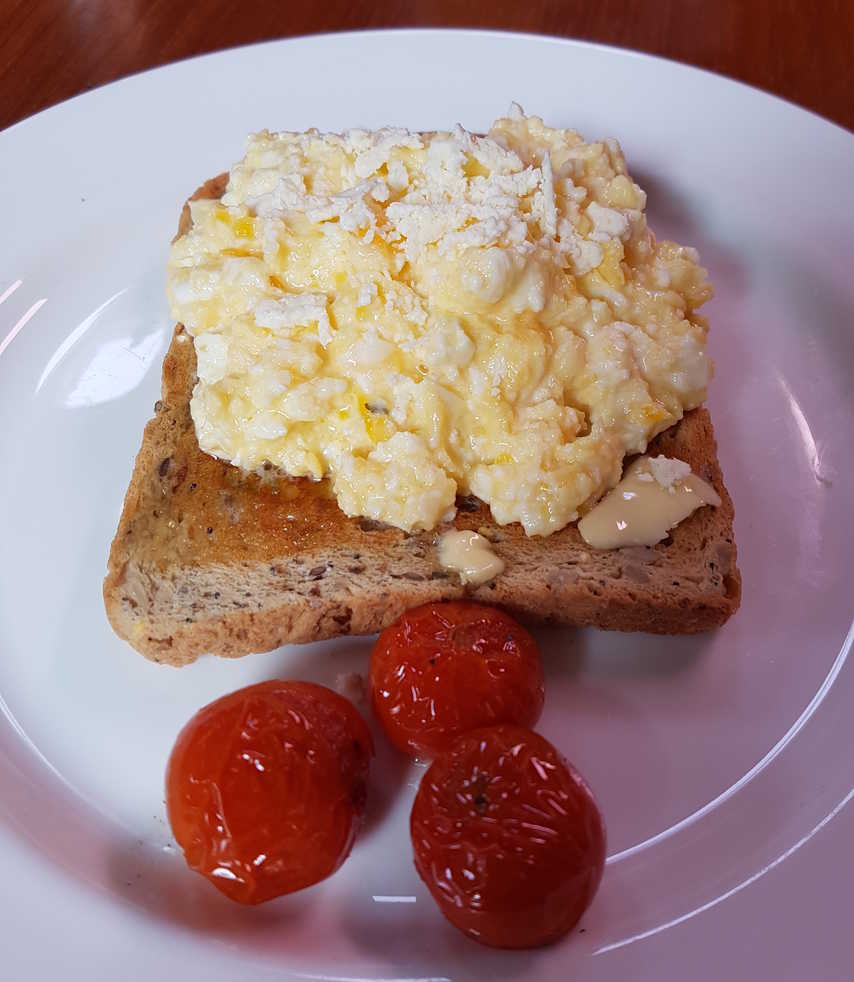
Along Came A Spider

I'm not quite sure if my life has suddenly become simpler, or more complicated. Definitely more complicated - Ed.
On the one hand I've finally moved out of my boat. Hurrah!
On the other hand I've moved in with my brother to help look after his two traumatised children who have had to be rehomed following family difficulties.
I've been given a list of acceptable dishes for the children, who simply refuse to eat anything icky, yucky, lumpy or unfamiliar. Hmm, déjà vu? Life's a circle I recall!
- beef: a roast joint
- pork: chops or a roast
- lamb: chops or a roast
- chicken: breaded, nuggets or a roast. Possibly tandoori. Or tikka. Oooh, the excitement!
- fish: breaded, battered or fingered
- potatoes: mashed, chipped, roasted or hash browned.
- carrots/broccoli/sprouts/cauliflower/peas: boiled. Just. Plain. Boiled.
- sausages: fried, roast or in a pie with beans
- pasta with red Dolmio sauce
- tuna casserole. Without the cheese.
- toad in the hole
- steak and kidney pudding. Without the kidney.
Reindeer Meat and Horseradish Vol au Vents, with Green Beans and Mashed Potato
meat main snack
At Christmas Flora gifted me a horseradish root, for our bloody marys, and a packet of dried reindeer meat from her visit to Norway. A sort of reindeer jerky, if you like.
It's sliced very thinly, almost like a prosciutto and packs quite a lot of flavour, if a little on the salty side.
I decided to use them both up in making a vol au vent filling. Together with some of the remaining Christmas Stock (it'll be fine - it's only late February yeah, OK - I'm a bit late writing this up).
Just because I'm using up leftovers doesn't mean it can't be presented with style. Hence the green bean parcels and the shaped mashed potato. But you could serve just the vol au vents as a canapé instead, if you liked.
I decided to use them both up in making a vol au vent filling. Together with some of the remaining Christmas Stock (it'll be fine - it's only late February yeah, OK - I'm a bit late writing this up).
Just because I'm using up leftovers doesn't mean it can't be presented with style. Hence the green bean parcels and the shaped mashed potato. But you could serve just the vol au vents as a canapé instead, if you liked.
Serves 3-4
Ingredients
For the Vol au Vents:- 400g puff pastry
- ½ egg yolk
For the Filling:- 80g thinly sliced dried reindeer meat
- rich stock, chicken or beef or reindeer!
- creamed horseradish sauce
- 2 tbsp flour
- 2 tbsp butter
- ½ cup milk
- ½ cup double cream
- 1-2 pickled gherkins
- a handful of parsley leaves, chopped
- 1½ egg yolks
For the Mash:- about 2lb/800g potatoes
- 2 oz/60g butter
- salt & white pepper
For the Beans:- 200g green beans
- 4-6 anchovies
- 1-2 cloves garlic
- olive oil
- zest and juice of 1 lime
- parsley stalks
- a handful of parsley leaves, sliced
Make the Horseradish Cream
Make up a strong horseradish sauce with 6" grated horseradish, 250ml sour cream and the juice of a lemon, then leave to mature for a day or two. Push the sauce through a sieve to remove the horseradish bits and create a smooth sauce.
For the Vol au Vents
Lightly beat two egg yolks with a little water.
Prepare the vol au vents: Roll the puff pastry to about 4-5mm thick. Using a 8-10 cm fluted pastry cutter cut out twice as many rounds as final vol au vents. You should be able to get around 16 rounds for 8 casings from the pastry.
Cut the centre out of half of the rounds using a smaller 5-6 cm fluted pastry cutter. Make a light cut into the centre of the whole rounds with the same cutter but don't cut all the way through - this will help them rise.
Brush the top of the whole rounds with egg wash and lay the cut-out rings on top, then brush both tops again. Avoid getting egg wash on the sides as it will inhibit their rising. If you like you can also make shallow, angled cuts along the outside edges of the rings with a small knife to aerate the dough and help it puff.
Chill for 15 minutes or as long as you can arrange. This will help to prevent shrinking during baking.
Heat the oven to 180-200°C/350-400°F/Gas 4-6. Line a baking sheet with greaseproof paper and lay on the chilled pastry cases. Brush the tops (and only the tops) a final time with egg wash. Bake for 10-20 minutes until they have risen and are golden on top.
Remove from the oven, allow to cool slightly and then cut the centre of the cases away with a knife and keep for later as a cap. Dig out any excess pastry from the cavity to make room for the filling. You can return the cases to the oven for an additional 4-5 minutes to dry out slightly if they need it.
For the Filling
Shred the thinly sliced dried reindeer meat, and simmer, lidded, with just enough stock to cover reindeer stock if you have it :) for about 15 minutes until it softens. Uncover and reduce until there is no excess liquid.
Slice up one or two small gherkins, then cut across the rounds to make short matchsticks. Set aside.
Cook a couple of tablespoons each of flour and butter in a small saucepan without browning until the mixture smells like pastry, then gradually add ½ a cup of milk, whisking until it thickens. Add ½ a cup of cream, whisk and heat through until it thickens. Add the softened reindeer meat and stock, and as much chopped gherkin as tastes well. Add milk or cream to adjust the consistency to that of thick custard. Add the chopped parsley.
Remove from the heat.
Blend the egg wash left over from glazing the pastries (there should be more than one yolk worth) with ½ cup of the strained horseradish sauce. Stir into the filling mixture. Taste and adjust the proportions and seasoning as necessary. If your reindeer meat is as salty as mine you won't need to add any extra salt. Fill the vol au vents with the sauce, put the little caps back on and serve still warm.
For the Mashed Potatoes
Peel the potatoes, cut into large even chunks (or not, depending on size) and simmer for 15-20 minutes until easily penetrated with a knife. You can use the same pan of boiling water to blanch your green beans too. Just dunk the sieve into it. Push the potatoes through a sieve or a potato ricer, mix with a generous lump of butter and season.
Use one of the earlier pastry cutters to shape the potato on each plate; fill the cutter, smooth the top, lift off the cutter.
For the Beans
Top and tail the green beans and cut into manageable lengths. Strip the parsley leaves from their stalks and chop them.
Blanche the beans and the parsley stalks; dunking them in a sieve into boiling water, then removing and draining them when the water returns to the boil.
Mince or press one or two garlic cloves. Chop up about a half-dozen anchovies (depending on size). Heat a little olive oil in a small pan and add the garlic and anchovies, sweat without browning until they melt down. Add the lime zest, then the par-boiled green beans, the reserved chopped parsley and lime juice.
Cover, shake, and heat through.
Make a loop of each softened parsley stalk by winding the ends around each other, then stuff the loop with green beans until it holds together.
Stand a green bean bundle on each plate and dress with pan juices.
Place two or three vol au vents on each plate and serve.
Make up a strong horseradish sauce with 6" grated horseradish, 250ml sour cream and the juice of a lemon, then leave to mature for a day or two. Push the sauce through a sieve to remove the horseradish bits and create a smooth sauce.
For the Vol au Vents
Lightly beat two egg yolks with a little water.
Prepare the vol au vents: Roll the puff pastry to about 4-5mm thick. Using a 8-10 cm fluted pastry cutter cut out twice as many rounds as final vol au vents. You should be able to get around 16 rounds for 8 casings from the pastry.
Cut the centre out of half of the rounds using a smaller 5-6 cm fluted pastry cutter. Make a light cut into the centre of the whole rounds with the same cutter but don't cut all the way through - this will help them rise.
Brush the top of the whole rounds with egg wash and lay the cut-out rings on top, then brush both tops again. Avoid getting egg wash on the sides as it will inhibit their rising. If you like you can also make shallow, angled cuts along the outside edges of the rings with a small knife to aerate the dough and help it puff.
Chill for 15 minutes or as long as you can arrange. This will help to prevent shrinking during baking.
Heat the oven to 180-200°C/350-400°F/Gas 4-6. Line a baking sheet with greaseproof paper and lay on the chilled pastry cases. Brush the tops (and only the tops) a final time with egg wash. Bake for 10-20 minutes until they have risen and are golden on top.
Remove from the oven, allow to cool slightly and then cut the centre of the cases away with a knife and keep for later as a cap. Dig out any excess pastry from the cavity to make room for the filling. You can return the cases to the oven for an additional 4-5 minutes to dry out slightly if they need it.
For the Filling
Shred the thinly sliced dried reindeer meat, and simmer, lidded, with just enough stock to cover reindeer stock if you have it :) for about 15 minutes until it softens. Uncover and reduce until there is no excess liquid.
Slice up one or two small gherkins, then cut across the rounds to make short matchsticks. Set aside.
Cook a couple of tablespoons each of flour and butter in a small saucepan without browning until the mixture smells like pastry, then gradually add ½ a cup of milk, whisking until it thickens. Add ½ a cup of cream, whisk and heat through until it thickens. Add the softened reindeer meat and stock, and as much chopped gherkin as tastes well. Add milk or cream to adjust the consistency to that of thick custard. Add the chopped parsley.
Remove from the heat.
Blend the egg wash left over from glazing the pastries (there should be more than one yolk worth) with ½ cup of the strained horseradish sauce. Stir into the filling mixture. Taste and adjust the proportions and seasoning as necessary. If your reindeer meat is as salty as mine you won't need to add any extra salt. Fill the vol au vents with the sauce, put the little caps back on and serve still warm.
For the Mashed Potatoes
Peel the potatoes, cut into large even chunks (or not, depending on size) and simmer for 15-20 minutes until easily penetrated with a knife. You can use the same pan of boiling water to blanch your green beans too. Just dunk the sieve into it. Push the potatoes through a sieve or a potato ricer, mix with a generous lump of butter and season.
Use one of the earlier pastry cutters to shape the potato on each plate; fill the cutter, smooth the top, lift off the cutter.
For the Beans
Top and tail the green beans and cut into manageable lengths. Strip the parsley leaves from their stalks and chop them.
Blanche the beans and the parsley stalks; dunking them in a sieve into boiling water, then removing and draining them when the water returns to the boil.
Mince or press one or two garlic cloves. Chop up about a half-dozen anchovies (depending on size). Heat a little olive oil in a small pan and add the garlic and anchovies, sweat without browning until they melt down. Add the lime zest, then the par-boiled green beans, the reserved chopped parsley and lime juice.
Cover, shake, and heat through.
Make a loop of each softened parsley stalk by winding the ends around each other, then stuff the loop with green beans until it holds together.
Stand a green bean bundle on each plate and dress with pan juices.
Place two or three vol au vents on each plate and serve.
Excellent. I give myself a little pat on the back :)
Lockdown Lūʻau

Gosh, the lockdown party never ends here at the Royal Quays Marina.
I discovered a new un-recipes website featuring mostly Japanese, oriental and some Hawaiian dishes. So it's a curry Lūʻau!
Which is ideal for someone now cooking on a Universal Credit budget - prepare to be underwhelmed...
So Long, but Thanks For All The Cheese!

So long in lockdown, that is!
If you were wondering - I'm actually locked down onboard my (tiny) yacht in the (award-winning!) Royal Quays marina. So no noticeable change in my life from any the of the last three years then.
Well, except that I'm not getting any sailing done.
I'm not sure it's strictly forbidden, but I can't help feeling all those police launches now magically crawling the Tyne would have something uncomplementary to say about it.
Astonishing, isn't it - that in a post-industrial, technologically advanced modern Western democracy our best response to an epidemic of bad colds
is identical to that of a 12th century peasant: Let's all hide from the plague in our caves.
Thanks government big brains - what a cunning plan!
On the plus side, the marina has kindly re-opened their bathrooms allowing me and the 1½ other live-aboard residents to once again access a toilet. And a bath.
Anyhoo, some of my more cosmopolitan friends have taken pity on my constrained circumstance (have you seen North Shields?) and shipped me a gift box of assorted fine cheeses. Artisanal cheeses from Wildes - Tottenham's urban cheese maker! (thanks Chris, Cathy and Maya)
Apparently artisanal cheese production is one of our country's essential services and so protected from the lockdown. Hoora!
Now, I don't wish to appear ungrateful (sorry, Chris, Cathy and Maya) but the box arrived somewhat the worse for wear. Or time. It seems the cheesy content had been sitting around somewhere too warm for too long and all gone a bit soggy and mouldy. A bit.
I don't know where the blame lies - the parcel delivery mechanism here at the marina isn't the best at the moment and I know the box was sitting in their heated office for a day, possibly two. And then there's the Royal Mail. Plenty of blame to go around there.
Fortunately all the cheeses were still edible (inasmuch as I did eat them), some of them were most delicious, and the accompanying port was excellent :)
Rebellion:
A camembert-like semi-soft cheese, good depth of flavour, nutty and sweet, the texture though is a bit too close to chewing gum for me - not quite runny enough.
High Cross:
A crumbly lightly-pressed brined curd cheese most resembling a Caerphilly with a sharp tangy flavour. Very tasty - I'd buy that by the pound.
St Bruce:
A curiously underwhelming green moulded cheese with a rather rubbery texture. It does melt well though.
Oddly enough the Wildes Cheese website makes no mention of the green mould, and their photo shows a notably mould-free porous yellow cheese with a beer-washed rind. So now I'm slightly concerned. I don't seem to have suffered any ill effects so far though.
Cough! Cough!
Napier:
A slightly crumbly hard cheese with a creamy texture, mild flavour and light tangy finish. Quite edible.
London Blue:
Which came in the form of a Baby Blue, (and doesn't appear to be actually blue).
A delicious little roundel and my favourite of the bunch. It's soft and gooey with bags of taste and body and manages to succesfully masquerade as a blue cheese. It also makes an excellent cheese sauce, say with mushrooms, bacon, garlic and cream.
Now please enjoy a couple of ludicrously complex recipes I slaved over developing for the consumption of your emergency cheese rations...
And what better compliment to such a sophisticated menu than that ration-card classic: the Jelly Fluffy?
Thanks government big brains - what a cunning plan!
On the plus side, the marina has kindly re-opened their bathrooms allowing me and the 1½ other live-aboard residents to once again access a toilet. And a bath.
Anyhoo, some of my more cosmopolitan friends have taken pity on my constrained circumstance (have you seen North Shields?) and shipped me a gift box of assorted fine cheeses. Artisanal cheeses from Wildes - Tottenham's urban cheese maker! (thanks Chris, Cathy and Maya)
Apparently artisanal cheese production is one of our country's essential services and so protected from the lockdown. Hoora!
Now, I don't wish to appear ungrateful (sorry, Chris, Cathy and Maya) but the box arrived somewhat the worse for wear. Or time. It seems the cheesy content had been sitting around somewhere too warm for too long and all gone a bit soggy and mouldy. A bit.
I don't know where the blame lies - the parcel delivery mechanism here at the marina isn't the best at the moment and I know the box was sitting in their heated office for a day, possibly two. And then there's the Royal Mail. Plenty of blame to go around there.
Fortunately all the cheeses were still edible (inasmuch as I did eat them), some of them were most delicious, and the accompanying port was excellent :)
Rebellion:
A camembert-like semi-soft cheese, good depth of flavour, nutty and sweet, the texture though is a bit too close to chewing gum for me - not quite runny enough.
High Cross:
A crumbly lightly-pressed brined curd cheese most resembling a Caerphilly with a sharp tangy flavour. Very tasty - I'd buy that by the pound.
St Bruce:
A curiously underwhelming green moulded cheese with a rather rubbery texture. It does melt well though.
Oddly enough the Wildes Cheese website makes no mention of the green mould, and their photo shows a notably mould-free porous yellow cheese with a beer-washed rind. So now I'm slightly concerned. I don't seem to have suffered any ill effects so far though.
Cough! Cough!
Napier:
A slightly crumbly hard cheese with a creamy texture, mild flavour and light tangy finish. Quite edible.
London Blue:
Which came in the form of a Baby Blue, (and doesn't appear to be actually blue).
A delicious little roundel and my favourite of the bunch. It's soft and gooey with bags of taste and body and manages to succesfully masquerade as a blue cheese. It also makes an excellent cheese sauce, say with mushrooms, bacon, garlic and cream.
Now please enjoy a couple of ludicrously complex recipes I slaved over developing for the consumption of your emergency cheese rations...
And what better compliment to such a sophisticated menu than that ration-card classic: the Jelly Fluffy?
Scrambled Eggs with High Cross
or Caerphilly
or Caerphilly
breakfast veg cheese
Scramble your eggs. Add Cheese. Serve.
OK not really, badly scrambled eggs are an abomination (right Aidan?) so you should learn to make them properly.
And here goes...
OK not really, badly scrambled eggs are an abomination (right Aidan?) so you should learn to make them properly.
And here goes...
Serves 1: ½ person per egg
Ingredients
- a generous knob of butter
- 2 eggs per person
- a pinch of salt
- 50g High Cross or Caerphilly cheese, crumbled
- 1 tblsp crème fraîche optional
- a fat slice of wholemeal toast, richly slathered in butter
Crumble your Wildes' High Cross cheese (or Caerphilly).
Break your eggs into a bowl, fish out the bits of shell, and loosely stir. Season with salt.
Pour in the egg and allow to sit until it begins to set at the bottom.
Turn cautiously with a silicon spatula to avoid breaking up the curds.
Continue doing this until the egg coheres and thickens but is still on the loose side (it will continue cooking to perfection after you remove the pan from the heat).
Stir through crème fraîche if using - adding cream or mayonnaise at the end does help to stop the eggs overcooking though and most of the cheese.
Serve on toast with the remaining cheese scattered on top.
Break your eggs into a bowl, fish out the bits of shell, and loosely stir. Season with salt.
Pro Tip:
I read somewhere that it was better, from the point of avoiding eggshell shrapnel, to crack eggs on a flat surface rather than a sharp edge - like a knife or the rim of your pan. It does seem to work out for the most part, but also tends to dribble egg white over your flat surface of choice.
You pays your money...
Melt a generous lump of butter in a pan over medium to low heat.I read somewhere that it was better, from the point of avoiding eggshell shrapnel, to crack eggs on a flat surface rather than a sharp edge - like a knife or the rim of your pan. It does seem to work out for the most part, but also tends to dribble egg white over your flat surface of choice.
You pays your money...
Pour in the egg and allow to sit until it begins to set at the bottom.
Turn cautiously with a silicon spatula to avoid breaking up the curds.
Continue doing this until the egg coheres and thickens but is still on the loose side (it will continue cooking to perfection after you remove the pan from the heat).
Stir through crème fraîche if using - adding cream or mayonnaise at the end does help to stop the eggs overcooking though and most of the cheese.
Serve on toast with the remaining cheese scattered on top.
And maybe some chopped chives, if you have some.
I didn't.
London Blue Pasta Sauce
main pasta meat sauce cheese
This works great with those packets of dirt cheap (£1.50 per kg) cooking bacon offcuts
you find at the back of the fridge in your Local Fucking Supermarket™
Ideal for when you're locked down and living on Universal Credit.
If some kind soul has sent you an emergency Wildes cheese pack, you can use your London Blue to make this, in which case you'll need to remove the furry rind first.
Other cheeses are also available.
I didn't measure my ingredients, so this is just a guess - your mileage may vary :)
Ideal for when you're locked down and living on Universal Credit.
If some kind soul has sent you an emergency Wildes cheese pack, you can use your London Blue to make this, in which case you'll need to remove the furry rind first.
Other cheeses are also available.
I didn't measure my ingredients, so this is just a guess - your mileage may vary :)
Serves 4
Ingredients
- 250g cooking bacon, chopped
- 200g chestnut mushrooms, chopped
- 3 cloves garlic, peeled, sliced
- 2 tomatoes, finely chopped
- 300ml double cream
- 200g Wildes' London Blue cheese, roughly chopped
Garnish:- fresh parsley, chopped
Chop the bacon into about ½" chunks.
Chop the mushrooms into about ½" pieces.
Slice the garlic.
Finely chop the tomatoes.
Peel the London Blue cheese and break up into chunks.
Heat a generous puddle of olive oil in a deep frying pan.
Fry the bacon until it finally boils off all that injected water, curing salts and (probably) weird anti-biotics and begins to brown.
Turn down the heat. Add the garlic and colour without burning.
Add the chopped mushrooms and fry until they lose a little moisture.
Add finely chopped tomatoes and stir briefly until they begin to soften.
Add cream and bring to a simmer.
Stir through the cheese until it melts.
Season.
Serve over pasta. It's a thin sauce, so something with a bit of surface to it - farfalle say.
Garnish with a grinding of black pepper and chopped parsley.
Chop the mushrooms into about ½" pieces.
Slice the garlic.
Finely chop the tomatoes.
Peel the London Blue cheese and break up into chunks.
Heat a generous puddle of olive oil in a deep frying pan.
Fry the bacon until it finally boils off all that injected water, curing salts and (probably) weird anti-biotics and begins to brown.
Turn down the heat. Add the garlic and colour without burning.
Add the chopped mushrooms and fry until they lose a little moisture.
Add finely chopped tomatoes and stir briefly until they begin to soften.
Add cream and bring to a simmer.
Stir through the cheese until it melts.
Season.
Serve over pasta. It's a thin sauce, so something with a bit of surface to it - farfalle say.
Garnish with a grinding of black pepper and chopped parsley.
OK, I forgot my parsley. It would probably have been nice.
Jelly Fluff
dessert
You know, I'd completely forgotten about making this fluffy jelly stuff with Mum as a kid
until my friend Flora thanks for the photo Flora!
asked me for a recipe to use up an old tin of evaporated milk she'd found in the back of a cupboard.
I discovered I'd never written the recipe up, so here it is!
The strangely artifical tang of the mousse, and the way the whipped bubbles gradually separate from the firmer jelly layer in the bowl below really take me back!
I suppose this was one of those recipes invented in the post-war years of my Mum's childhood to cover for their lack of access to real milk or cream.
I don't remember what Mum called it, but it seems to be most often referred to as Carnation Milk Jelly, Jelly Fluff or Jelly Whip.
Mum always used a red jelly (strawberry or raspberry I guess) and Carnation brand evaporated milk, but I'm sure it's just as good with other brands.
Maybe even real cream?
For best whipped volume make sure to thoroughly chill the tin of evaporated milk in the fridge beforehand.
The strangely artifical tang of the mousse, and the way the whipped bubbles gradually separate from the firmer jelly layer in the bowl below really take me back!
I suppose this was one of those recipes invented in the post-war years of my Mum's childhood to cover for their lack of access to real milk or cream.
I don't remember what Mum called it, but it seems to be most often referred to as Carnation Milk Jelly, Jelly Fluff or Jelly Whip.
Mum always used a red jelly (strawberry or raspberry I guess) and Carnation brand evaporated milk, but I'm sure it's just as good with other brands.
Maybe even real cream?
For best whipped volume make sure to thoroughly chill the tin of evaporated milk in the fridge beforehand.
Serves up a Massive Bowl.
Ingredients
- 170g tin of evaporated milk chilled
- 1 packet of flavoured jelly blocks, suitable for making 1 pint
Melt the jelly with half the amount of boiling water recommended on the packet about a ½ pint,
allow to cool to room temperature.
Using an electric whisk or a vigorous hand whisk, whip the evaporated milk until it has tripled in size. While continuing to whisk gradually add the jelly. Whisk for a further 30 seconds then pour into a large bowl or individual serving glasses.
Put in the fridge to set.
Using an electric whisk or a vigorous hand whisk, whip the evaporated milk until it has tripled in size. While continuing to whisk gradually add the jelly. Whisk for a further 30 seconds then pour into a large bowl or individual serving glasses.
Put in the fridge to set.
Hmmmmm, you can almost taste the food shortages!
Marking North Shields Time

Well, I'm marking time here in the Royal Quays Marina while just cooking up a storm. Storm Dennis, in fact :)
Christmas Sea Lights

I almost didn't make it home for Christmas this year thanks to the unexpected (to me!) Metro train drivers' strike.
Living in Newcastle is a bit like living in the 1970's!
We managed an almost flawless Christmas dinner this year - we've really got it down now. Famous last words :)
Even the children were prepared to eat this yuletide's festive starter (we told them they were chicken nuggets).
Kurt got the roasties perfect - he brought the cooking water to a boil before adding the potatoes and threw in some bicarbonate of soda too which really seemed to help. Thanks Serious Eats!
Also he didn't boil the fuck out of them this time.
If I have one complaint; the bread sauce just didn't taste quite right. Perhaps it needed longer cooking. Like the mysteriously sticky Christmas pud it says two hours right there in the recipe!. Well it wouldn't be Christmas without having something to complain about - right Kurt?
Unusually this year Kurt dragged the fambly to a Christmas Eve carol service in the village church (to much wailing and gnashing of teeth) which turned out to be really fun. The vicar was young, enthusiastic and female it was all very Vicar of Dibley and the kids got the chance to set fire to themselves and their neighbours with lighted kristingles (nope, me neither). They even joined in the singing.
It's a Christmas miracle!
Now here are the things no Christmas is complete without:
Merry Christmas Yawl!
Haggis Bon Bons with Whisky Marmalade Sauce
meat starter
You just need enough flour, egg, and breadcrumbs to coat the haggis balls you roll.
I made my breadcrumbs by pulsing crust-free bread quite finely in a blender, then toasting these crumbs in the oven until lightly browned. You could probably use fresh breadcrumbs, or crush the dried crumbs further if you'd like a finer bon bon coating.
Alternative sauces you might consider:
I made my breadcrumbs by pulsing crust-free bread quite finely in a blender, then toasting these crumbs in the oven until lightly browned. You could probably use fresh breadcrumbs, or crush the dried crumbs further if you'd like a finer bon bon coating.
Alternative sauces you might consider:
- a brose of double cream simmered with whisky
- mayonnaise flavoured with mustard and whisky
- whisky flavoured demi-glace
- a sweet chilli dressing or a quick mix of sweet chilli sauce, rice wine vinegar and sesame oil
Serves 4
Ingredients
- 200g haggis
- 50g seasoned flour
- 1 egg
- 100g dried breadcrumbs
For the Sauce:- 4 tbsps whisky
- juice of 1 lemon
- 6 tbsps marmalade
Set out three bowls with seasoned flour, whisked egg, breadcrumbs.
Remove the haggis skin, break the haggis up into pieces and form each one into a rough ball about the size of a lychee or a small plum.
Roll each ball in flour, then egg, then breadcrumbs to coat well.
Put the balls in the fridge to chill for an hour or until needed.
Make the sauce by melting the marmalade and stirring in the lemon juice and whisky. Adjust the balance of ingredients to taste. You may also need to add a little sugar.
Heat oil in a deep-fryer to 170°C and fry the balls for 2-4 minutes until golden brown.
Drain and serve drizzled with whisky marmalade sauce and a small side salad. If you're not cooking Christmas dinner for Philistines.
Remove the haggis skin, break the haggis up into pieces and form each one into a rough ball about the size of a lychee or a small plum.
Roll each ball in flour, then egg, then breadcrumbs to coat well.
Put the balls in the fridge to chill for an hour or until needed.
Make the sauce by melting the marmalade and stirring in the lemon juice and whisky. Adjust the balance of ingredients to taste. You may also need to add a little sugar.
Heat oil in a deep-fryer to 170°C and fry the balls for 2-4 minutes until golden brown.
Drain and serve drizzled with whisky marmalade sauce and a small side salad. If you're not cooking Christmas dinner for Philistines.
Not a bad starter. Well, the kids didn't hate them!
They wouldn't touch the sauce though.
They wouldn't touch the sauce though.
The Wanderer Returns. Then Quickly Leaves Again!

Featuring my triumphant return to Port Edgar Marina.
And the sad realisation that it's the same inhospitable, badly managed, poorly maintained, swell-ridden shithole that I sailed away from almost exactly three years ago :(
It's very disappointing to report that whilst the lucrative properties around the marina - the shops and restaurants - have been improved immeasurably whilst I was away, the infrastructure and facilities of the marina itself have not gained in the slightest. The pontoons are every bit as rotted and holed, the cleats as loose and unreliable and if anything there is even less tyre barrier and even more uncomfortable swell than when I left!
Not only that but the old amenities have completely evaporated, with the marina now offering a single men's toilet and two miniaturised shower stalls to be shared not only between all the berth holders but also the marina staff and even some of the local shop workers.
And all only a short cycle distance away from the pontoons!
The sooner they build this fancy new marina down in Leith to offer some real competition on the Forth the better for everyone I reckon.
From the very start Port Edgar management were unwelcoming - I hurried to the marina office to announce my glorious return after 3 years of travelling the high seas and their reception troll sourly informed me that "You're not allowed to receive mail here" whilst handing me a 'Welcome Home' card that some kind soul had inadvertently sent me in the post (thanks Flora xx).
I explained my plans to live onboard the yacht until I found a flat and was told that the marina policy was to allow no-one to stay aboard for more than two weeks and that I would have to leave after that. How a marina can function without allowing visiting folks to stay on their boats more than two weeks I simply don't understand but there you have it.
I've only come across two or three other marinas which were in the least bothered by the idea of paying customers actually using their marina, and they were only concerned about people spending more than two or three months living aboard. Mind you, those marinas didn't feel as if they might break apart and wash out to sea. Well, excepting Holyhead that is :)
I tussled with the reception troll over whether this two week period was consecutive or cumulative (apparently the inflexible marina policy is entirely at the troll's discretion) and we finally agreed on my being kicked out at the end of the month. Just time to dry out on the slip and restore Harmony's anti-fouling (badly needed), and to do all my laundry (for free - since Port Edgar management isn't competent enough to maintain the coin boxes on their washers and dryers).
Silver clouds eh?
To take a break from Port Edgar's inadequate toilet facilities, if only for a few days, I moved in with Flora and Marco.
Whilst there, in-between doing house repairs, I cooked a couple of traditional British roast dinners for Marco, who's from Italy and therefore completely ignorant about good food.
Flora has been wanting to try out a fancy starter she'd recently eaten and which I thought sounded like a good contender for my family's Christmas dinner: figs with goats cheese and basil. So she prepared them to kick off our classic roast beef dinner; featuring yorkshire puddings, boiled potatoes, horseradish sauce, some over-cooked asparagus and a rich gravy.
The gravy was absolutely delicious - if I say so myself.
I persuaded the nice Stockbridge butcher to chop me up a big bag of bones which I boiled up into stock to bulk out the typically meager roasting juices so we could have a decent amount of gravy.
And the sad realisation that it's the same inhospitable, badly managed, poorly maintained, swell-ridden shithole that I sailed away from almost exactly three years ago :(
It's very disappointing to report that whilst the lucrative properties around the marina - the shops and restaurants - have been improved immeasurably whilst I was away, the infrastructure and facilities of the marina itself have not gained in the slightest. The pontoons are every bit as rotted and holed, the cleats as loose and unreliable and if anything there is even less tyre barrier and even more uncomfortable swell than when I left!
Not only that but the old amenities have completely evaporated, with the marina now offering a single men's toilet and two miniaturised shower stalls to be shared not only between all the berth holders but also the marina staff and even some of the local shop workers.
And all only a short cycle distance away from the pontoons!
The sooner they build this fancy new marina down in Leith to offer some real competition on the Forth the better for everyone I reckon.
From the very start Port Edgar management were unwelcoming - I hurried to the marina office to announce my glorious return after 3 years of travelling the high seas and their reception troll sourly informed me that "You're not allowed to receive mail here" whilst handing me a 'Welcome Home' card that some kind soul had inadvertently sent me in the post (thanks Flora xx).
I explained my plans to live onboard the yacht until I found a flat and was told that the marina policy was to allow no-one to stay aboard for more than two weeks and that I would have to leave after that. How a marina can function without allowing visiting folks to stay on their boats more than two weeks I simply don't understand but there you have it.
I've only come across two or three other marinas which were in the least bothered by the idea of paying customers actually using their marina, and they were only concerned about people spending more than two or three months living aboard. Mind you, those marinas didn't feel as if they might break apart and wash out to sea. Well, excepting Holyhead that is :)
I tussled with the reception troll over whether this two week period was consecutive or cumulative (apparently the inflexible marina policy is entirely at the troll's discretion) and we finally agreed on my being kicked out at the end of the month. Just time to dry out on the slip and restore Harmony's anti-fouling (badly needed), and to do all my laundry (for free - since Port Edgar management isn't competent enough to maintain the coin boxes on their washers and dryers).
Silver clouds eh?
To take a break from Port Edgar's inadequate toilet facilities, if only for a few days, I moved in with Flora and Marco.
Whilst there, in-between doing house repairs, I cooked a couple of traditional British roast dinners for Marco, who's from Italy and therefore completely ignorant about good food.
Flora has been wanting to try out a fancy starter she'd recently eaten and which I thought sounded like a good contender for my family's Christmas dinner: figs with goats cheese and basil. So she prepared them to kick off our classic roast beef dinner; featuring yorkshire puddings, boiled potatoes, horseradish sauce, some over-cooked asparagus and a rich gravy.
The gravy was absolutely delicious - if I say so myself.
I persuaded the nice Stockbridge butcher to chop me up a big bag of bones which I boiled up into stock to bulk out the typically meager roasting juices so we could have a decent amount of gravy.
Unfortunately the centre-piece beef was disappointingly tough and dry.
I presume a combination of a relatively poor joint (butcher's fault),
and an unsuitable roasting method (my fault).
Since the butcher's sirloin was dauntingly expensive I had gone for a cheaper rolled topside (or was it silverside?)
and roasted it at a moderate temperature (around 180°C) for a couple of hours.
Perhaps the joint would have more suited longer cooking at a much lower temperature, say 100°C possibly in a little liquid? And it also might have benefited from being sliced much more thinly than I managed?
Still, the failure of the meat was more than made up for by the magnificence of the Yorkshires, which exploded out of their muffin tins like miniature aliens, and the richness of the gravy.
Did I mention the gravy?
All was not lost with the chewy beef though since Marco used the leftovers to treat us to some fine Italian meatballs called Plopettes - justa lika his Mamma useda to makea :)
Fortunately we made up for this partial culinary success with a very fine lamb dinner beginning with a surprisingly tasty turnip soup (possibly because it was mostly sweet potato) and finishing with a classic bread and butter pudding. Served with a not-so-classic vanilla ice cream.
The roast leg of lamb was absolutely gorgeous. Perhaps because, as Flora never resisted reminding us, it was extraordinarily expensive.
We cooked it at a very high heat with a ton of garlic à la Keith Floyd (though without the anchovies) and served it with salsa verde, creamed leeks, some green beans with lemon, capers, garlic and anchovies and the usual roast potatoes and parsnips.
Flora turned down my offer of bread sauce :(
Every so often Flora gets a care package from some French friends, and I was lucky enough to be there when the latest one arrived. She suggested we attempt to make a meal out of one of the cans of mystery meat, which turned out to be some kind of tinned French haggis.
Quelle horreur!
I won't even attempt to describe the smell. Or the texture. Or the taste.
I'm not generally a fussy eater but take my advice - if anyone ever offers you some delicious French haggis; Run! Run Fast!
The eventual return of Flora's Mum meant I got kicked back to Port Edgar (getting kicked out seems to becoming something of a pattern) since she can only handle one awkward house-guest at a time, but I didn't leave empty-handed. Flora kindly gifted me a bottle of weird Czech liqueur called Becherovka for flavouring vegetables, and cleaning toilets.
And now my two Port Edgar weeks are up, so I'll be setting off on my nautical wanderings again - I'm heading down the coast for Newcastle's Royal Quays Marina where I fancy spending the winter. In preparation for which I'll be soon making up some aromatic Christmas stock for our fabulous Christmas gravy.
Sigh.
I shall miss having a real kitchen.

Perhaps the joint would have more suited longer cooking at a much lower temperature, say 100°C possibly in a little liquid? And it also might have benefited from being sliced much more thinly than I managed?
Still, the failure of the meat was more than made up for by the magnificence of the Yorkshires, which exploded out of their muffin tins like miniature aliens, and the richness of the gravy.
Did I mention the gravy?
All was not lost with the chewy beef though since Marco used the leftovers to treat us to some fine Italian meatballs called Plopettes - justa lika his Mamma useda to makea :)
Fortunately we made up for this partial culinary success with a very fine lamb dinner beginning with a surprisingly tasty turnip soup (possibly because it was mostly sweet potato) and finishing with a classic bread and butter pudding. Served with a not-so-classic vanilla ice cream.
The roast leg of lamb was absolutely gorgeous. Perhaps because, as Flora never resisted reminding us, it was extraordinarily expensive.
We cooked it at a very high heat with a ton of garlic à la Keith Floyd (though without the anchovies) and served it with salsa verde, creamed leeks, some green beans with lemon, capers, garlic and anchovies and the usual roast potatoes and parsnips.
Flora turned down my offer of bread sauce :(
Every so often Flora gets a care package from some French friends, and I was lucky enough to be there when the latest one arrived. She suggested we attempt to make a meal out of one of the cans of mystery meat, which turned out to be some kind of tinned French haggis.
Quelle horreur!
I won't even attempt to describe the smell. Or the texture. Or the taste.
I'm not generally a fussy eater but take my advice - if anyone ever offers you some delicious French haggis; Run! Run Fast!
The eventual return of Flora's Mum meant I got kicked back to Port Edgar (getting kicked out seems to becoming something of a pattern) since she can only handle one awkward house-guest at a time, but I didn't leave empty-handed. Flora kindly gifted me a bottle of weird Czech liqueur called Becherovka for flavouring vegetables, and cleaning toilets.
And now my two Port Edgar weeks are up, so I'll be setting off on my nautical wanderings again - I'm heading down the coast for Newcastle's Royal Quays Marina where I fancy spending the winter. In preparation for which I'll be soon making up some aromatic Christmas stock for our fabulous Christmas gravy.
Sigh.
I shall miss having a real kitchen.

The Currants of Wrath

Moving right along.
From Kinlochbervie marina, around Cape Wrath at the North West corner of Scotland, along its short Northern coast and then into the Pentland Firth. It's a strangely empty stretch of coastline and not a good place to be caught out by bad weather. Kinlochbervie is the last homely house before the Wrath and the ideal leaping off point for the trip around the top of Britain - if you can find space on their limited but popular pontoons.
It used to be a busy fishing port, but these days you will struggle even to find someone to sell you diesel there.
Lobsters, on the other hand, are a deal easier - you can just hail one of the many passing lobster boats and offer them a tenner for one of their living catch. If the weather is accommodating then just pop the lobster in a bucket of seawater (you might want a lid) and anchor for free around the corner in Loch Clash. It's a pleasant, sandy bay with what used to be Kinlochbervie's main pier, and a fine anchorage when the wind isn't from the west.
Hang your barbecue from the stern guard-rails, slice your squirming lobster in half, slather with garlic butter and get grilling.
Yumsk!
On an unrelated note, I've now come to the firm conclusion that all the time, trouble, mess and cleaning involved in barbecuing for one on a boat is just not worth it :(
Cape Wrath itself is a well-titled horribly exposed rocky headland which has notoriously lethal tides and overfalls that any amount of rough weather can quickly roil up into a small-boat-eating maelstrom. Despite approaching the cape in settled mellow, if misty, weather a surprisingly strong wind whipped up around the headland and there was enough churning washing-machine tidal action to encourage me to keep well away from the rocky coastline. Which left me with little to see in the persisting sea fog over the whole of the next two days.
In fact I arrived at the charmingly named port of Scrabster, at the eastern end of the north coast of Scotland, in a complete pea-souper barely able to see my anchor in front of my bow. Thank goodness for my GPS chart plotter, and for Scrabster harbour's radar operator letting me know about the giant fishing boat also inbound.
I was so pleased with this blog title The Currants of Wrath that I just had to invent a recipe to go with it. It would have been appropriate if I'd made it during my sail around the Wrath, but I didn't have any currants. Or raisins. Fortunately there's a Local Fucking Supermarket™ on the outskirts of Thurso which does.
From Kinlochbervie marina, around Cape Wrath at the North West corner of Scotland, along its short Northern coast and then into the Pentland Firth. It's a strangely empty stretch of coastline and not a good place to be caught out by bad weather. Kinlochbervie is the last homely house before the Wrath and the ideal leaping off point for the trip around the top of Britain - if you can find space on their limited but popular pontoons.
It used to be a busy fishing port, but these days you will struggle even to find someone to sell you diesel there.
Lobsters, on the other hand, are a deal easier - you can just hail one of the many passing lobster boats and offer them a tenner for one of their living catch. If the weather is accommodating then just pop the lobster in a bucket of seawater (you might want a lid) and anchor for free around the corner in Loch Clash. It's a pleasant, sandy bay with what used to be Kinlochbervie's main pier, and a fine anchorage when the wind isn't from the west.
Hang your barbecue from the stern guard-rails, slice your squirming lobster in half, slather with garlic butter and get grilling.
Yumsk!
On an unrelated note, I've now come to the firm conclusion that all the time, trouble, mess and cleaning involved in barbecuing for one on a boat is just not worth it :(
Cape Wrath itself is a well-titled horribly exposed rocky headland which has notoriously lethal tides and overfalls that any amount of rough weather can quickly roil up into a small-boat-eating maelstrom. Despite approaching the cape in settled mellow, if misty, weather a surprisingly strong wind whipped up around the headland and there was enough churning washing-machine tidal action to encourage me to keep well away from the rocky coastline. Which left me with little to see in the persisting sea fog over the whole of the next two days.
In fact I arrived at the charmingly named port of Scrabster, at the eastern end of the north coast of Scotland, in a complete pea-souper barely able to see my anchor in front of my bow. Thank goodness for my GPS chart plotter, and for Scrabster harbour's radar operator letting me know about the giant fishing boat also inbound.
I was so pleased with this blog title The Currants of Wrath that I just had to invent a recipe to go with it. It would have been appropriate if I'd made it during my sail around the Wrath, but I didn't have any currants. Or raisins. Fortunately there's a Local Fucking Supermarket™ on the outskirts of Thurso which does.
After a couple of days banging off the filthy tyres fending the Scrabster harbour wall (like Kinlochbervie, Scrabster has limited but popular pontoon space),
I set off across the Pentland Firth for Orkney.
I'd been in two minds about skipping the northern Scottish islands completely and just continuing on around the coast to Wick. There's a lot of up north up north. I could easily spend weeks sailing around Shetland and the Orkneys but I was running out of year. Also, to be honest, I was quite nervous about the whole thing; the Orkney islands are bedevilled by fearsome tidal streams, and north of Fair Isle is getting disturbingly remote. Still, it seemed a shame not to do the whole circumnavigation thing properly, so I screwed my courage to the sticking place and sailed north. With good weather, careful planning and a good bit of luck I made my way through Scapa Flow to Stromness (handy for picking up fresh mackerel from neighbouring yachts who are much better fisherman than I), then up the west coast of Orkney and on to Fair Isle. After a rough night tied alongside the Fair Isle ferry Good Shepherd IV in the north harbour (and I have the blue paint marks to prove it!) I finished the leg up to Shetland. Probably the worst crossing of the three year voyage :(
But the next day dawned clear and sunny and I spent the week visiting Scalloway (where I learned the wonder of reestit mutton) and happily meandering around the west coast of Shetland, before making my way back south to Orkney.
I had such a good return crossing that I was able to skip Fair Isle completely and make landfall at North Ronaldsay. What a difference the weather makes! Unfortunately several days of storms were forecast, so I picked up one of Orkney's handy free mooring buoys for a few days - in Elwick Bay, behind the picturesque island of Shapinsay across the sound from Kirkwall marina..
And there I saw the sea monster. An honest-to-God actual sea monster. It happened like this...
I'd been in two minds about skipping the northern Scottish islands completely and just continuing on around the coast to Wick. There's a lot of up north up north. I could easily spend weeks sailing around Shetland and the Orkneys but I was running out of year. Also, to be honest, I was quite nervous about the whole thing; the Orkney islands are bedevilled by fearsome tidal streams, and north of Fair Isle is getting disturbingly remote. Still, it seemed a shame not to do the whole circumnavigation thing properly, so I screwed my courage to the sticking place and sailed north. With good weather, careful planning and a good bit of luck I made my way through Scapa Flow to Stromness (handy for picking up fresh mackerel from neighbouring yachts who are much better fisherman than I), then up the west coast of Orkney and on to Fair Isle. After a rough night tied alongside the Fair Isle ferry Good Shepherd IV in the north harbour (and I have the blue paint marks to prove it!) I finished the leg up to Shetland. Probably the worst crossing of the three year voyage :(
But the next day dawned clear and sunny and I spent the week visiting Scalloway (where I learned the wonder of reestit mutton) and happily meandering around the west coast of Shetland, before making my way back south to Orkney.
I had such a good return crossing that I was able to skip Fair Isle completely and make landfall at North Ronaldsay. What a difference the weather makes! Unfortunately several days of storms were forecast, so I picked up one of Orkney's handy free mooring buoys for a few days - in Elwick Bay, behind the picturesque island of Shapinsay across the sound from Kirkwall marina..
And there I saw the sea monster. An honest-to-God actual sea monster. It happened like this...
About three days in, fairly late in the evening as the light was failing, I had finished my dinner and was just starting in on the whisky and happened to glance out of the cockpit. I noticed a puff of smoke, as from an engine exhaust, so I popped my head up to take a look (you never know when you might be on for some free fish).
I heard a cough from the engine and could clearly see the smoke drifting over the low-lying island in towards the shore, but could see no sign of the boat.
Wait, what low-lying island? And how come that low-lying island is drifting? Moving?? Swimming???
And so I watched in astonishment as a vast oily black behemoth oozed its way past my boat just an arms-length off in the gloom, glistening and puffing with barely a ripple just a great dark hump showing, the damn thing easily the length of my boat. And as it disappeared off into the twilight I was left in a strange mixture of excitement and terror.
And it was at that point that I ran for my camera.
Which is why I have no photographic evidence, honest! Anyway it was already pretty dark, and I'd only have ended up with Loch Ness Monster quality photos. Though I'm pretty sure it was actually a basking shark.
After that, re-crossing the Pentland Firth back to mainland Scotland was something of an uneventful letdown!
Edinburgh here I come...
St. Fucking Kilda!

So I finally lived the dream - the secret dream of all British sailors: To make the passage out to the UK's nautical El Dorado, its salty Shangri La, its xenobathic Xanadu - the fantastically remote island archipelago of St. Kilda.
Not that St. Kilda is really all that far - it's only about 50 miles from the nearest safe anchorages on Harris, but still it is an exposed voyage out into the raw Atlantic with its risk of sudden changes in weather and seas. Plus you are starting from somewhere that's already pretty remote - the outer side of the Outer Hebrides. You don't get much more outer than that!
'Tis a wild and lonely place, ye ken.
My sail out there wasn't entirely straightforward, it ended up being a two day beat (natch), the first leg taking me massively southwards to the almost equally remote low-lying Monach Islands, where I anchored overnight, before finally being able to lay St. Kilda on the second day. And an exciting relief it is to finally see those sheer rocky cliffs rearing out of the empty ocean with their promise of a sheltered loch.
I anchored in the well-protected Village Bay, some distance off the old pier and the new slipway. The bottom is clean sand and I eventually got Harmony firmly secured, even though the convenient shallows were congested by a host of small buoys, and rowed ashore.
The St. Kilda radio operator was very welcoming, but asked me if I'd mind moving my yacht from where I'd anchored between the marker buoys which guide in their delivery ferry, landing building materials onto the slip. I declined, opining that they would probably manage to work around me.
She then gave me a fine introduction to the island and its surprisingly large population of birdwatchers, sheep taggers, archaeologist and the remaining small MOD contingent (as they dismantle the old barrack buildings). And to the excellent museum set up on the single street of drystone black houses where the original (and ancient) Kildarians resided in medieval squalor before the last 34 of them were shipped off to the mainland in 1930. Probably not a moment too soon - a funny-looking bunch of inbreds they were and the creepy old photographs in the museum still give off a very Wickerman vibe.
Then I spent a few pleasant evening hours hiking up the rocky hillsides and investigating the drystone cleats (St. Kilda is rich in stones) where the islanders used to dry their seabirds, eggs, bits of stringy goat and their peat. And used to live! at least in the bigger ones. Apparently they managed surprisingly little fishing due to the inhospitality of the local seas. Or possibly not so surprisingly.
And so to bed. I did ask if there was a pub. There wasn't :(
During the night the wind kicked off pretty enthusiastically quickly reaching a (un-predicted) Force 7 and bringing astonishingly fierce gusts down the steep mountain sides into the bay, spinning my little boat right round its anchor and keeping me awake worrying most of the night. Fortunately the holding was good, and Harmony survived but I left at first light the next morning for the looooong, wet, horrible 12-hour sail back to South Harris.
And no time for cooking :(
Some Day This Rain's Gonna End

I came in to pick up a mooring in Loch Nan Ceall off Arisaig over a week ago to be safe during some predicted southerly gales.
As often happens the predicted high winds failed to materialise but heavy rain did. (Amazing isn't it, that a meteorological service unable to predict regional weather 48 hours ahead is convinced of its unerring capacity to predict the climate of the entire planet for the next 48 years?) So I moved off the mooring buoy (saving £12 a night) and anchored off to wait it out. I'm on holiday dammit - I don't need to sail in no rain.
And here I am still waiting.
Meantime I bought a very-reduced-price pack of celery from the local Spa, and had to think of things to do with it. Here they are.
Chicken and Celery Stew
nautical stew fowl main
A surprisingly bland stew, though handy as a one-pot boat dish. I thought it might be tastier than it was.
Serves 6
Ingredients
- 1 chicken
- ground black pepper
- 1 onion
- 1 lb potatoes
- 1 head celery
- black peppercorns
- dried oregano (thyme or marjoram)
- bay leaves
- epazote
- 1 lemon
- olive oil
Joint the chicken, debone and cut the chicken flesh into large pieces (I left the skin on).
Season the chicken generously with ground black pepper and brown in oil in a large pan, in batches if necessary. Set aside.
Peel the onion, slice lengthwise into eighths. Brown in the pot with a sprinkling of dried oregano. Add to the chicken.
Peel or scrape the potatoes and cut into large chunks (unless small). Fry to brown a little. Add to the chicken.
Chop the celery into fat chunks. Grate the lemon zest. Fry together briefly in the pan to coat in the remaining fat, then add a little wine or water to clean the pan and add to the chicken.
Make a simple stock from the chicken bones and carcass - fry briefly to brown in a large pot, just cover with water, add whole peppercorns and bay leaves, bring to the boil and simmer for 30 minutes. Strain the stock into the reserved chicken.
Add epazote to the chicken mix, bring to the boil and simmer for 10-15 minutes until everything is tender. Season.
Mix the juice of the lemon with about the same volume of olive oil and pour over the stew, or offer as a dressing on the side.
Serve with white rice (the best option), mash or couscous.
Peel the onion, slice lengthwise into eighths. Brown in the pot with a sprinkling of dried oregano. Add to the chicken.
Peel or scrape the potatoes and cut into large chunks (unless small). Fry to brown a little. Add to the chicken.
Chop the celery into fat chunks. Grate the lemon zest. Fry together briefly in the pan to coat in the remaining fat, then add a little wine or water to clean the pan and add to the chicken.
Make a simple stock from the chicken bones and carcass - fry briefly to brown in a large pot, just cover with water, add whole peppercorns and bay leaves, bring to the boil and simmer for 30 minutes. Strain the stock into the reserved chicken.
Add epazote to the chicken mix, bring to the boil and simmer for 10-15 minutes until everything is tender. Season.
Mix the juice of the lemon with about the same volume of olive oil and pour over the stew, or offer as a dressing on the side.
Serve with white rice (the best option), mash or couscous.
Not very interesting unfortunately, though I would have added beans or chickpeas if I'd had any.
I tried serving it with a sprinkling of tarragon vinegar - no improvement. I could try it with a little sour cream?
Or perhaps it would have been better spiced up with chorizo and smoked paprika?
I tried serving it with a sprinkling of tarragon vinegar - no improvement. I could try it with a little sour cream?
Or perhaps it would have been better spiced up with chorizo and smoked paprika?
Slow Braised Celery and Tomato
Sedano e Pomodori Brasati
Sedano e Pomodori Brasati
side meat
This caught my eye linked from an interesting article by Lesley Porcelli praising
soft (read long)-cooked vegetables
and decrying how we no longer cook through the bitter, sulphurous stage of stewing green vegetables out to the delightfully unctuous collapsing uplands.
Too much bright green crispness preserved in blanching and ice.
I didn't want to use only part of a tin of tomatoes to make this, so I substituted a couple of tablespoons of tomato purée and tomato juice instead, frying the purée in the fried onion, then adding the celery and juice.
I also substituted chorizo for the pancetta, frying slightly less weight of chorizo matchsticks (the flavour is more intense than pancetta) into the fried onion but then leaving it to cook in the sauce with the celery rather than removing to add back later.
I didn't want to use only part of a tin of tomatoes to make this, so I substituted a couple of tablespoons of tomato purée and tomato juice instead, frying the purée in the fried onion, then adding the celery and juice.
I also substituted chorizo for the pancetta, frying slightly less weight of chorizo matchsticks (the flavour is more intense than pancetta) into the fried onion but then leaving it to cook in the sauce with the celery rather than removing to add back later.
Serves 4-6
Ingredients
- 3 oz pancetta or perhaps 2oz chorizo, cut into 1" matchsticks
- ¼ cup extra-virgin olive oil
- 1 large yellow onion, cut in half, cored, and very thinly sliced
- 2 lb celery stalks, trimmed and diagonally cut into 2" lenghts
- ¾ cup whole, peeled canned tomatoes with juice, crushed by hand or a combination of tomato purée and juice
- ¼ cup water
- salt and freshly ground black pepper, to taste
Put pancetta in a 6-qt. saucepan and place over medium-high heat. Cook, stirring occasionally, until its fat renders, about 12 minutes.
(If the pancetta begins to brown too fast, reduce the heat to medium-low.)
Using a slotted spoon, transfer the pancetta to paper towels to drain, and set aside.
Divide the celery with its juices between serving bowls, and sprinkle with the reserved pancetta. Serve hot or at room temperature.
If using chorizo, just fry it up after frying the onion and then leave it in the pan.
Add the olive oil to the pan, and return to medium-high heat. Add the onion, and cook, stirring occasionally, until soft and light brown, about 10 minutes.
Add the celery, tomatoes, and ¼ cup water, and season with salt and pepper.
Fry the tomato purée a little after the onion if using before adding the tomato juice.
Cover pan with lid, and cook, stirring occasionally adding additional water if necessary,
until celery is very tender, about 1½ hours.Divide the celery with its juices between serving bowls, and sprinkle with the reserved pancetta. Serve hot or at room temperature.
Rather tasty: it is amazing how soft and silky the celery becomes, but be sure to cook it for long enough to dissolve the stringy parts.
Taste a few different pieces to be certain - they tend to have varying degrees of stringyness.
Makes an excellent foil for a strata.
Makes an excellent foil for a strata.
Muck and Brass and Curry

The rather picturesque Wee Isles off the south of Skye consist of Muck and Brass, Eigg and Chips, Rum and Coke, and Canna [insert your own joke here]. I visited while working my way through a series of curries. Or at least I started with Muck, and then the wind came and then the rain came. So that's as far as I got for a while. Scottish summer eh?
Bit of a funny old place, Muck. Incredibly busy when I was there, but I suspect populated almost entirely by visitors. As far as I saw there was a tea room, but not a single shop.
Very pretty views though.
Palak Murgh
Spinach and Chicken Curry
Spinach and Chicken Curry
main fowl curry
I adapted
Maunika Gowardhan's recipe
by adjusting the spices and adding some lime pickle. I might be inclined to try it without the pickle next time though :)
I had only 500g of spinach, but frankly more would have been better - perhaps double.
I had only 500g of spinach, but frankly more would have been better - perhaps double.
Serves 6
Ingredients
- 1 medium chicken, jointed
- 500g spinach
- 2-3 bay leaves
- a stick of cassia or cinnamon
- 8 cardamoms
- 2 largish onions, puréed
- 2" piece of ginger, peeled puréed
- a head of garlic, peeled, puréed
- 2 tbsps tomato purée
- a few tablespoons of thick cream
For the Marinade:- 300g yoghurt
- 2-4 teaspoons lime pickle
- 1 tsp salt
- 1 tsp turmeric
- 1 tsp chilli powder
- 1 tsp garam masala
- 2 tsps coriander seeds, coarsely crushed
Options for Garnish:- a handful of dried fenugreek leaves, crushed (kasoori methi)
- slivers of ginger
- small bunch coriander, chopped
- dry-roasted cashew nuts
Roughly grind the coriander seeds in a mortar.
Mix into the yoghurt with the other marinade ingredients: lime pickle, salt, turmeric, chilli powder, garam masala.
Joint the chicken into 8 pieces (breasts, thighs, legs, wings), leaving the skin on. Deeply score the pieces and mix with the marinade.
Leave in the fridge overnight.
Set aside a handful or two of spinach (for texture) later. Blanch the rest of the spinach in boiling water for a few seconds then drain, and purée.
Purée the onion, and then the garlic and the ginger together, reserving a few slices of ginger cut into slivers for garnish.
Heat a generous quantity of ghee or oil in a large pan and fry the bay leaves, cassia and cardamoms until they fizz, then taking a few pieces of chicken at a time, scrape off excess marinade and fry them until lightly browned and set aside. Do this in batches until all the chicken is done. Scrape out the bits and spices from the pan and add to the chicken.
Stir in the tomato paste and cook again until the bitter smell cooks off and the oil separates.
Scrape in the leftover marinade and stir well, then add back the chicken, bring to a simmer (add a little liquid if too dry), cover and cook for 15-20 minutes until the chicken is tender.
Add the spinach purée, the handful of chopped spinach and cook through, season to taste, then stir through a swirl of cream.
Garnish with crushed dried fenugreek leaves, ginger slivers, coriander leaves and/or toasted cashew nuts. As you like.
Serve with rice or chapatis and more lime pickle on the side.
Set aside a handful or two of spinach (for texture) later. Blanch the rest of the spinach in boiling water for a few seconds then drain, and purée.
Purée the onion, and then the garlic and the ginger together, reserving a few slices of ginger cut into slivers for garnish.
Heat a generous quantity of ghee or oil in a large pan and fry the bay leaves, cassia and cardamoms until they fizz, then taking a few pieces of chicken at a time, scrape off excess marinade and fry them until lightly browned and set aside. Do this in batches until all the chicken is done. Scrape out the bits and spices from the pan and add to the chicken.
This will be a long, slow process generating a lot of spitting and burning.
But if you want to leave the skin on, without it ending up too pale and fatty it seems necessary.
The alternative would be to skin the chicken, and then just fry up the marinated pieces after the onion, garlic and ginger without looking for much browning.
Reheat the oil, adding more if necessary, and fry the onion paste until cooked and the oil beginning to separate,
then add the garlic and ginger paste and fry until it too smells cooked and the oil separates.The alternative would be to skin the chicken, and then just fry up the marinated pieces after the onion, garlic and ginger without looking for much browning.
Stir in the tomato paste and cook again until the bitter smell cooks off and the oil separates.
Scrape in the leftover marinade and stir well, then add back the chicken, bring to a simmer (add a little liquid if too dry), cover and cook for 15-20 minutes until the chicken is tender.
Add the spinach purée, the handful of chopped spinach and cook through, season to taste, then stir through a swirl of cream.
Garnish with crushed dried fenugreek leaves, ginger slivers, coriander leaves and/or toasted cashew nuts. As you like.
Serve with rice or chapatis and more lime pickle on the side.
Not too dusty.
The lime pickle adds a nice hint of citrus zestiness, but don't overdo it.
Feel free to pep it up with some sliced green chillies though.
The lime pickle adds a nice hint of citrus zestiness, but don't overdo it.
Feel free to pep it up with some sliced green chillies though.
Cauliflower, Potato and Pea Curry
veg main curry
I combined a number of similar yoghurty cauliflower curry recipes and incorporated the potatoes and peas I had to hand.
Serves 6
Ingredients
- 2 tsps panch poran
- ½-1 tsp chilli flakes
- 500g potato, cubed
- 1 cauliflower, broken into florets
- 2 tsps ground coriander
- 1 tsp ground cumin
- 1 tsp ground turmeric
- 1 tsp ground ginger maybe?
- salt
- 2 tsps dried fenugreek leaves, crushed
- 4 chopped tomatoes
- a few tablespoons of yoghurt
- 500g peas
- ½ tsp garam masala
- bunch fresh coriander
Heat oil or ghee in a large pan.
Fry the panch poran and the chilli flakes until they pop and release their aroma.
Add the potato cubes and fry to colour.
Add the cauliflower florets and fry to colour.
Throw in the ground spices (except the garam masala) and the salt and fry, stirring to prevent burning the spices, until the oil begins to separate.
Add the dried fenugreek leaves and the chopped tomatoes. Cover and cook until the tomatoes collapse.
Add the peas and warm through (if frozen) or cook until tender (if fresh).
Stir in yoghurt and heat through.
Serve dressed with a sprinkling of garam masala and coriander leaves.
Fry the panch poran and the chilli flakes until they pop and release their aroma.
Add the potato cubes and fry to colour.
Add the cauliflower florets and fry to colour.
Throw in the ground spices (except the garam masala) and the salt and fry, stirring to prevent burning the spices, until the oil begins to separate.
Add the dried fenugreek leaves and the chopped tomatoes. Cover and cook until the tomatoes collapse.
Add the peas and warm through (if frozen) or cook until tender (if fresh).
Stir in yoghurt and heat through.
Serve dressed with a sprinkling of garam masala and coriander leaves.
S'alright. Like all the other yoghurt-based cauliflower curries :)
Green Beans Curry with Coconut
veg vegan curry side
I had a go at currying a bag of reduced-price green beans.
To go with the other curries I had on the go.
The results weren't too awful.
To go with the other curries I had on the go.
The results weren't too awful.
Serves 4
Ingredients
- 250g green beans, sectioned
- oil or ghee for frying
- 1 tsp onion seeds
- 2" ginger root, minced
- 6 garlic cloves, sliced
- 1 tomato, chopped
- 2 tbsps coconut milk powder
Spices:- 1 tsp ground cumin
- 2 tsps ground coriander
- 1 tsp chilli powder
- 1½ tsps ground turmeric
- 1 tsp salt
Top and tail the green beans, then cut them into 2" sections.
Heat oil or ghee in a saucepan until shimmering, add the onion seeds and fry until they fizz and pop.
Peel and mince the ginger and add to the pan, frying until it colours.
Peel the garlic, slice thinly lengthwise and add to the pan, frying until it begins to colour.
Mix the ground spices and salt with enough water to make a thick paste and add to the pan, fry until the harsh aroma has cooked off and oil begins to separate.
Add the chopped tomato and stir through.
Add the green beans and stir through.
Mix the coconut water with enough hot water to make a thin paste then add to the pan. Mix thoroughly, adding more water if necessary and cook until the beans are tender.
Heat oil or ghee in a saucepan until shimmering, add the onion seeds and fry until they fizz and pop.
Peel and mince the ginger and add to the pan, frying until it colours.
Peel the garlic, slice thinly lengthwise and add to the pan, frying until it begins to colour.
Mix the ground spices and salt with enough water to make a thick paste and add to the pan, fry until the harsh aroma has cooked off and oil begins to separate.
Add the chopped tomato and stir through.
Add the green beans and stir through.
Mix the coconut water with enough hot water to make a thin paste then add to the pan. Mix thoroughly, adding more water if necessary and cook until the beans are tender.
A perfectly acceptable, if slightly underwhelming, mild curry.
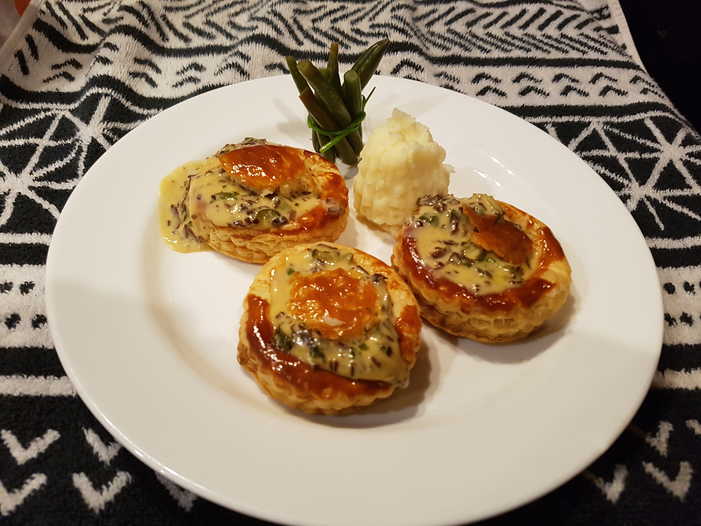
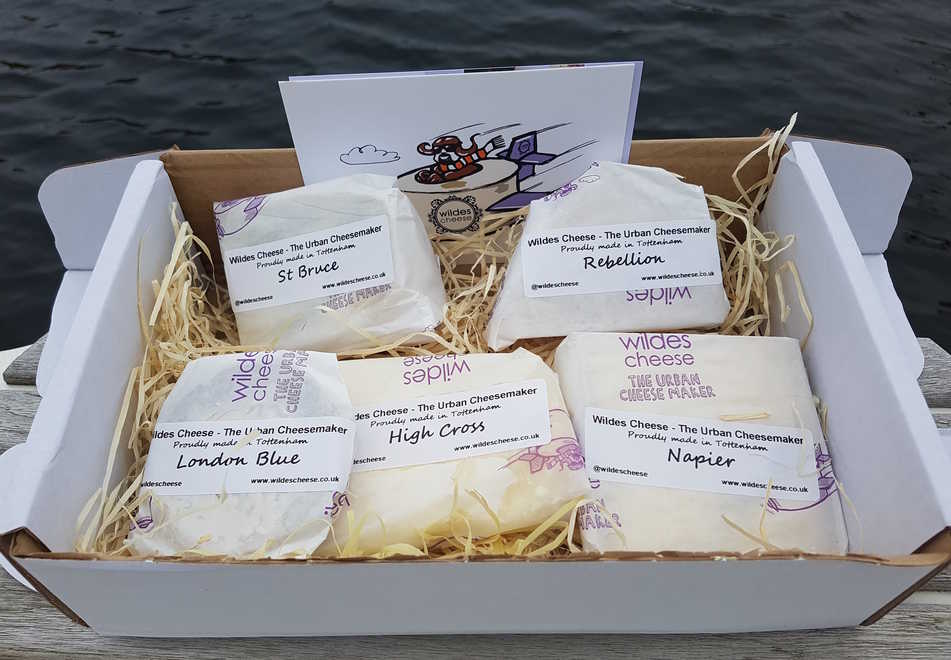
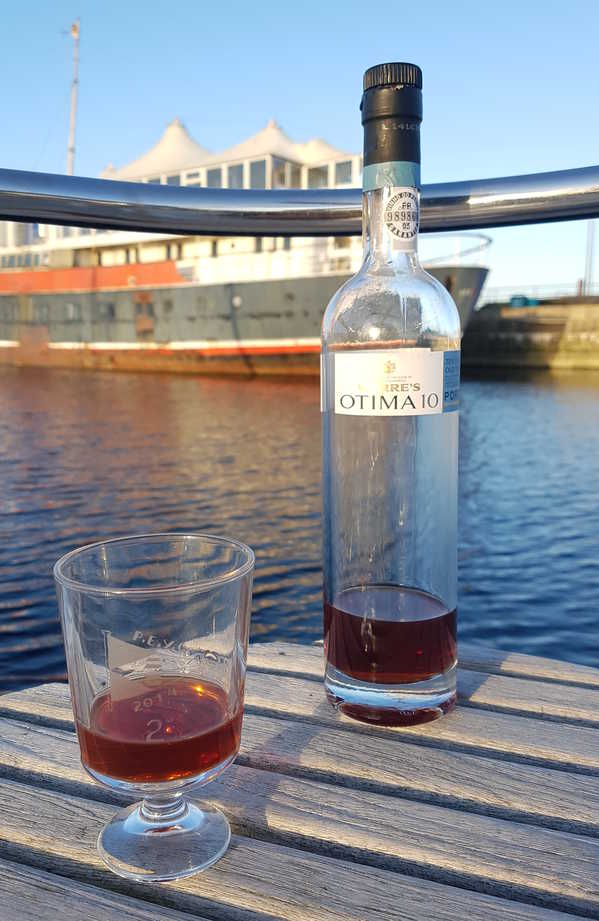
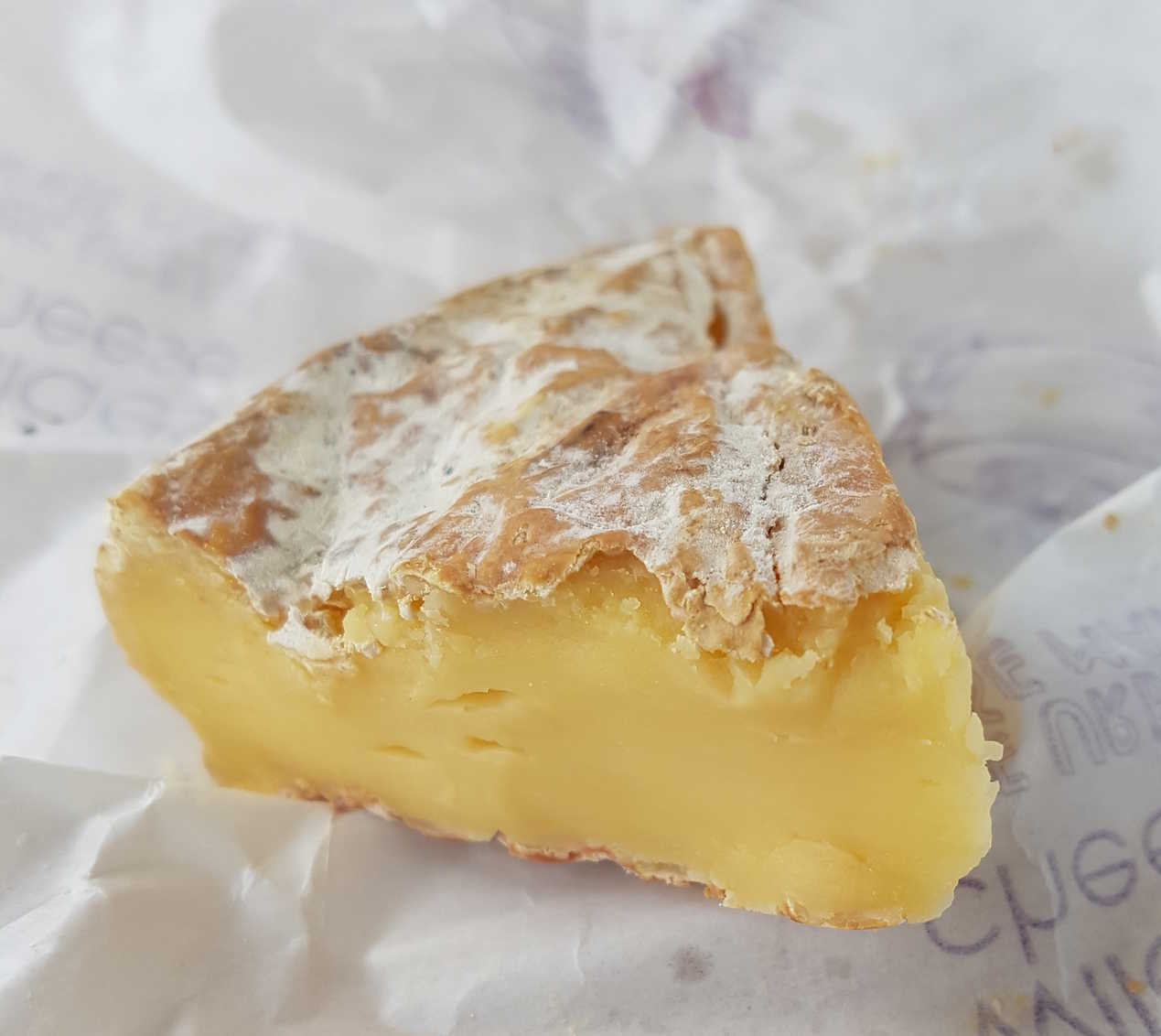
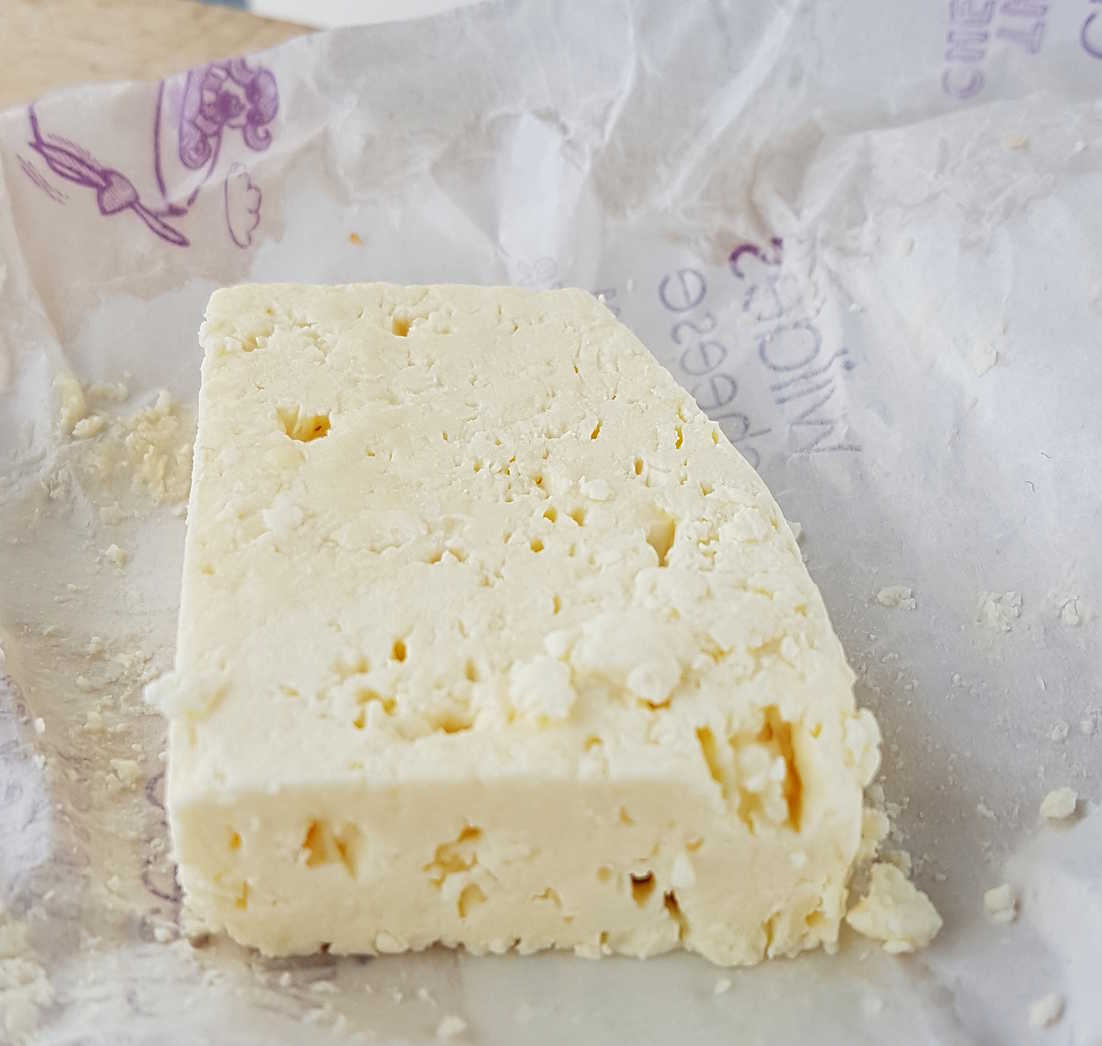
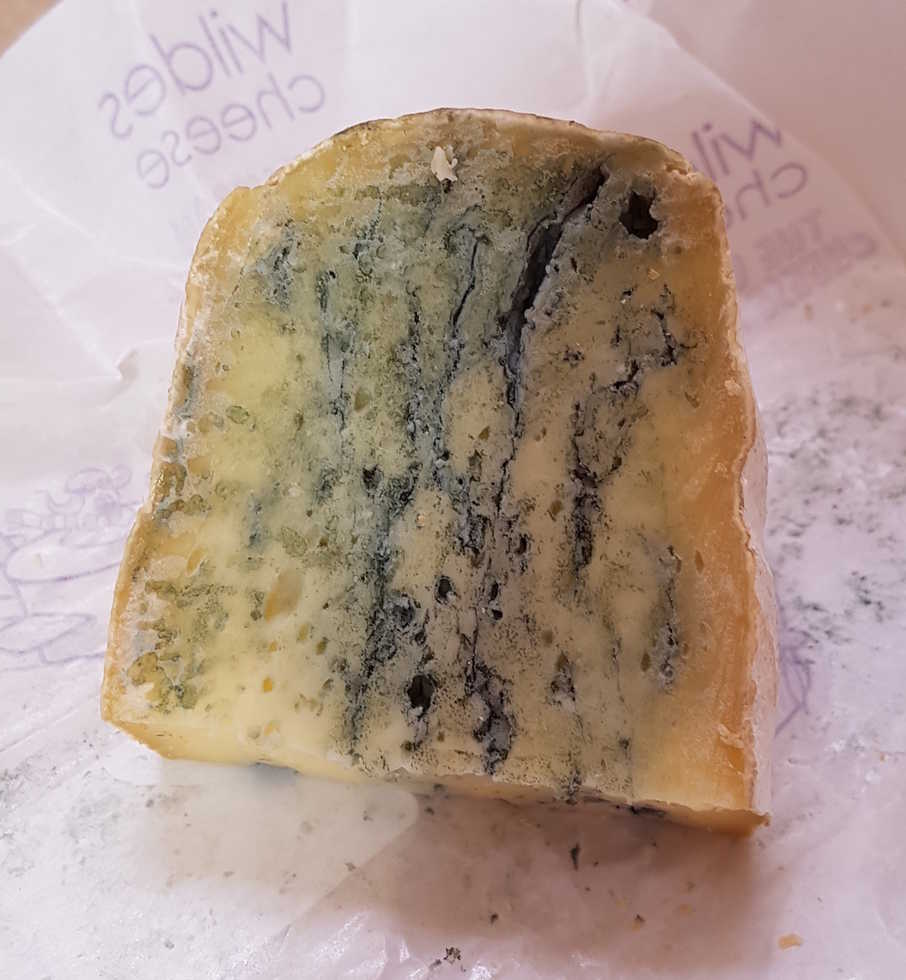
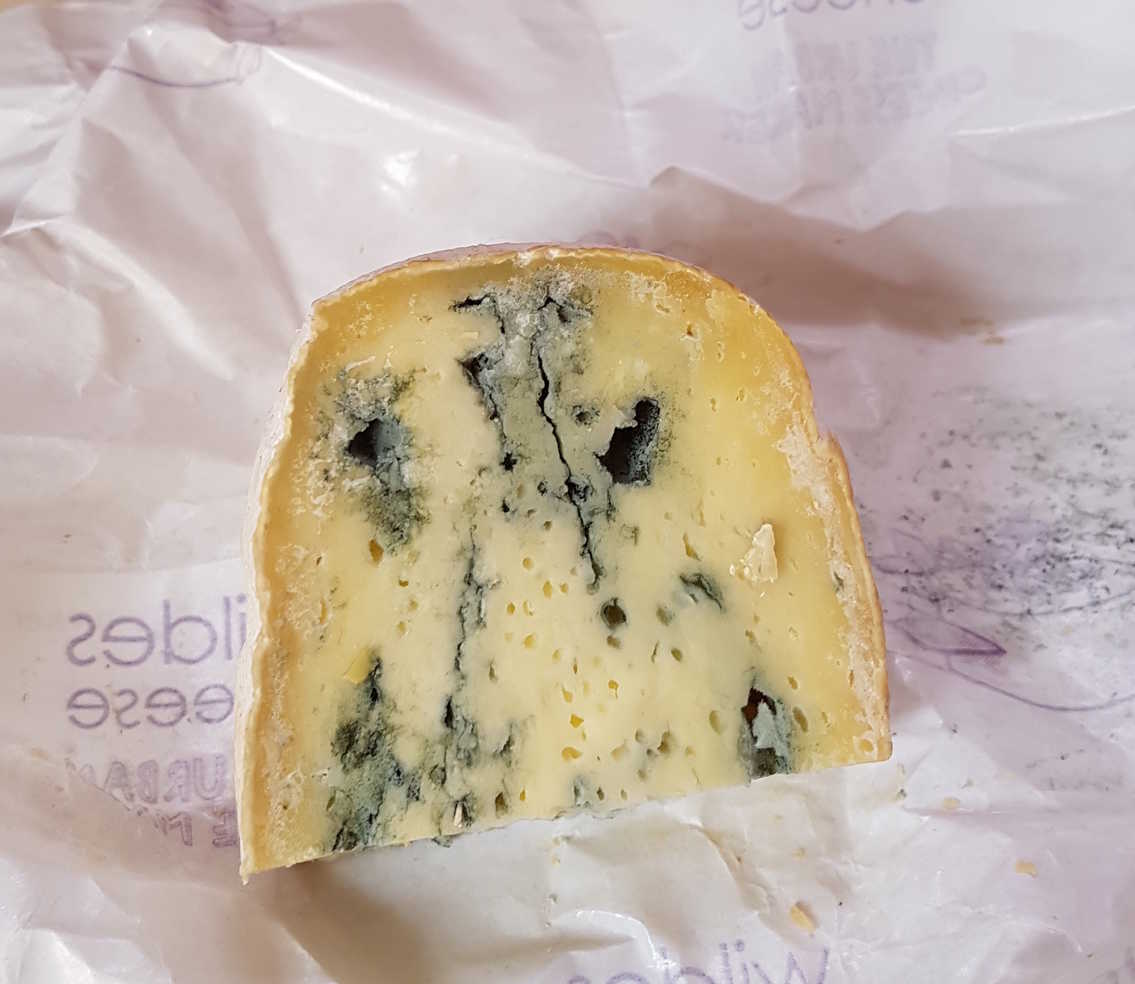
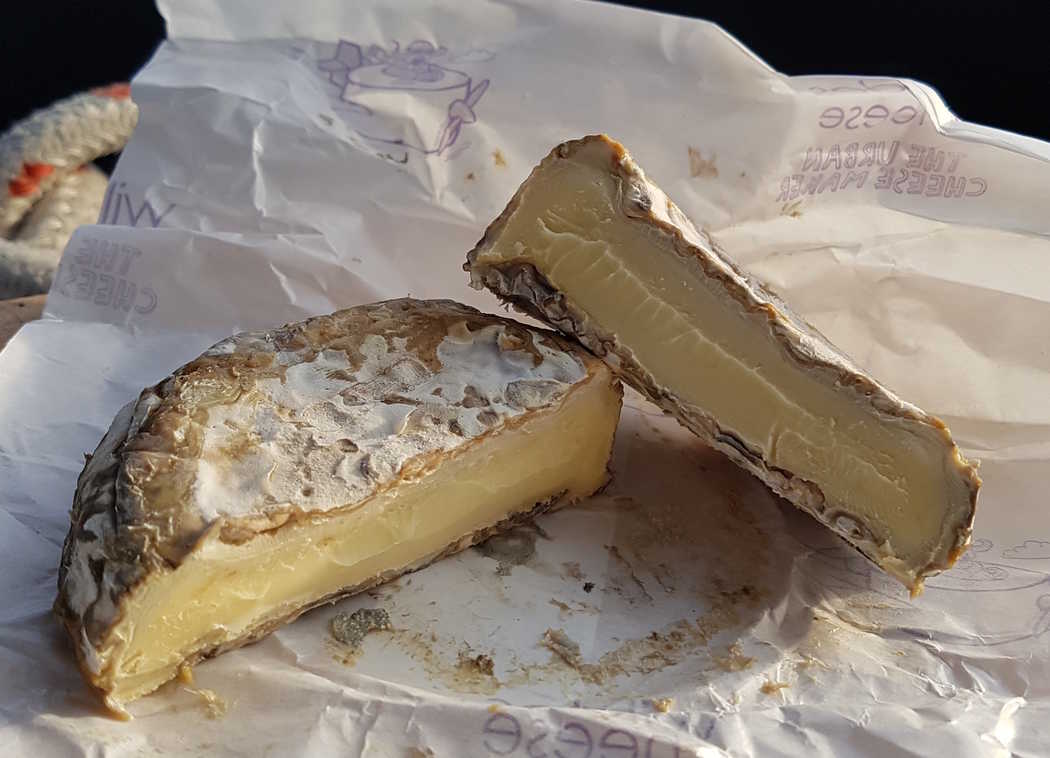
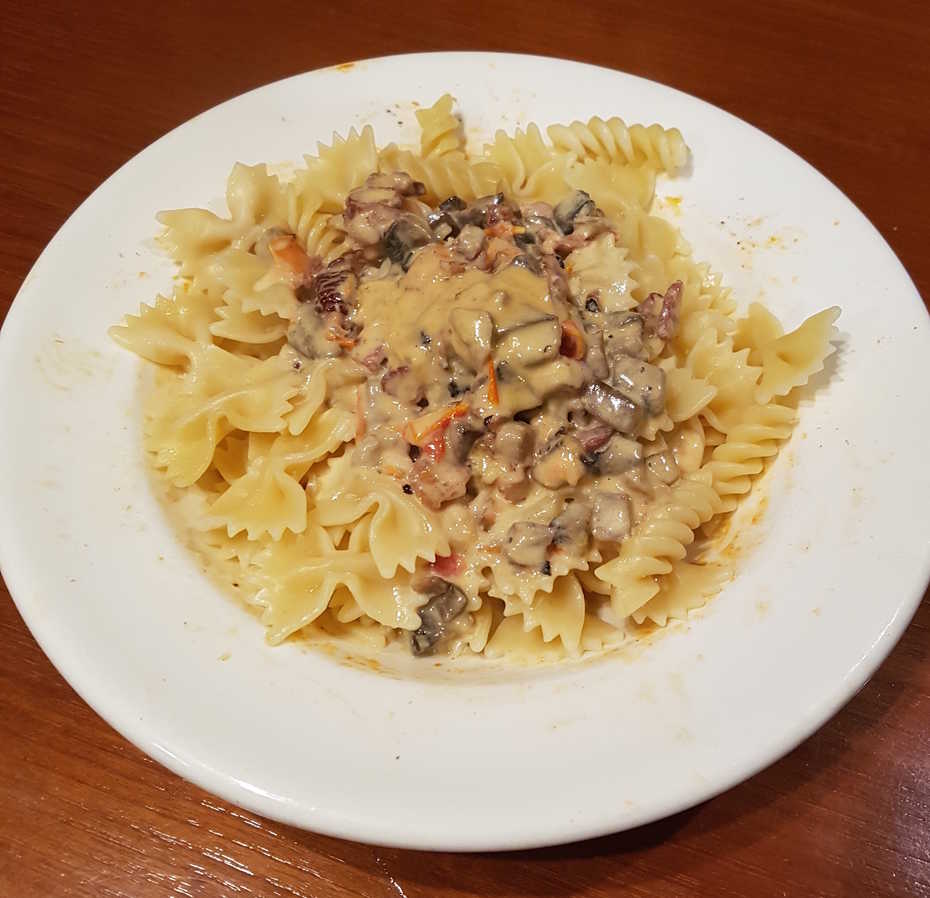





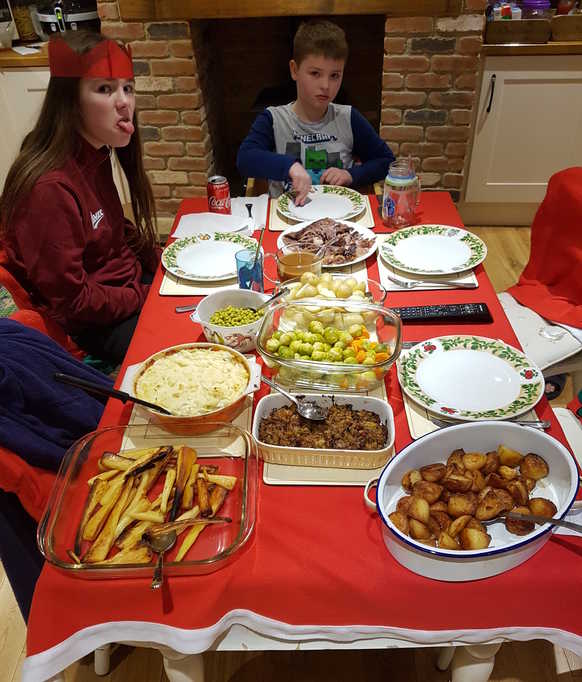
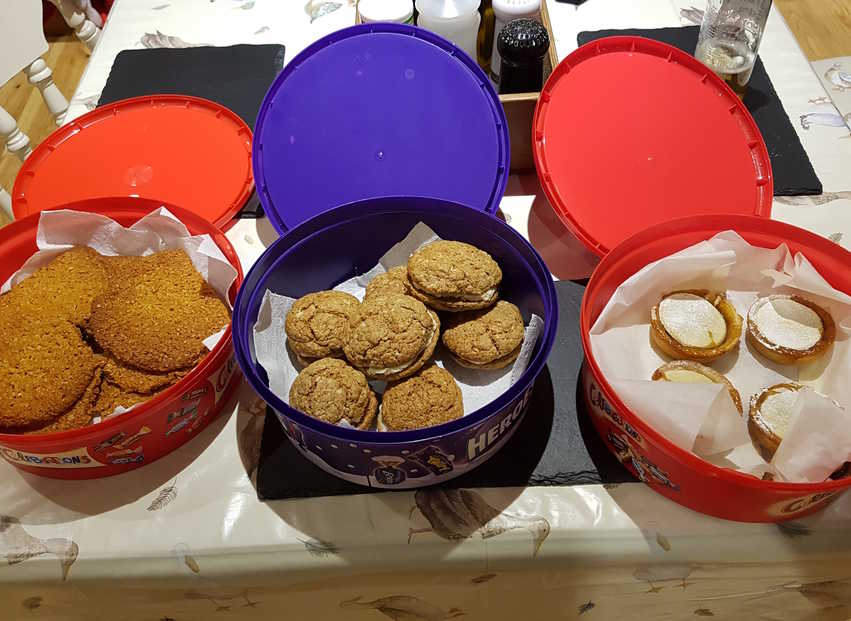



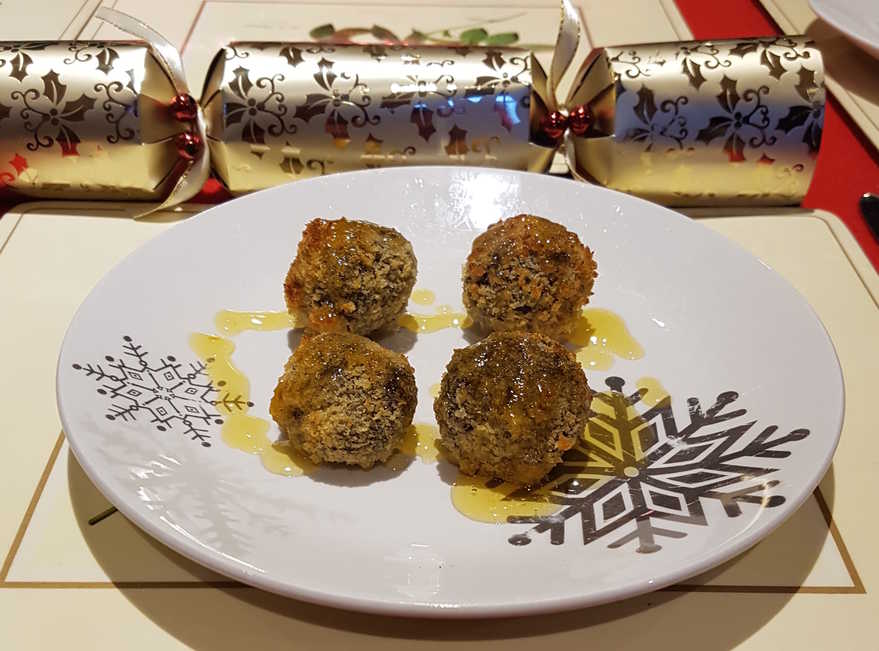


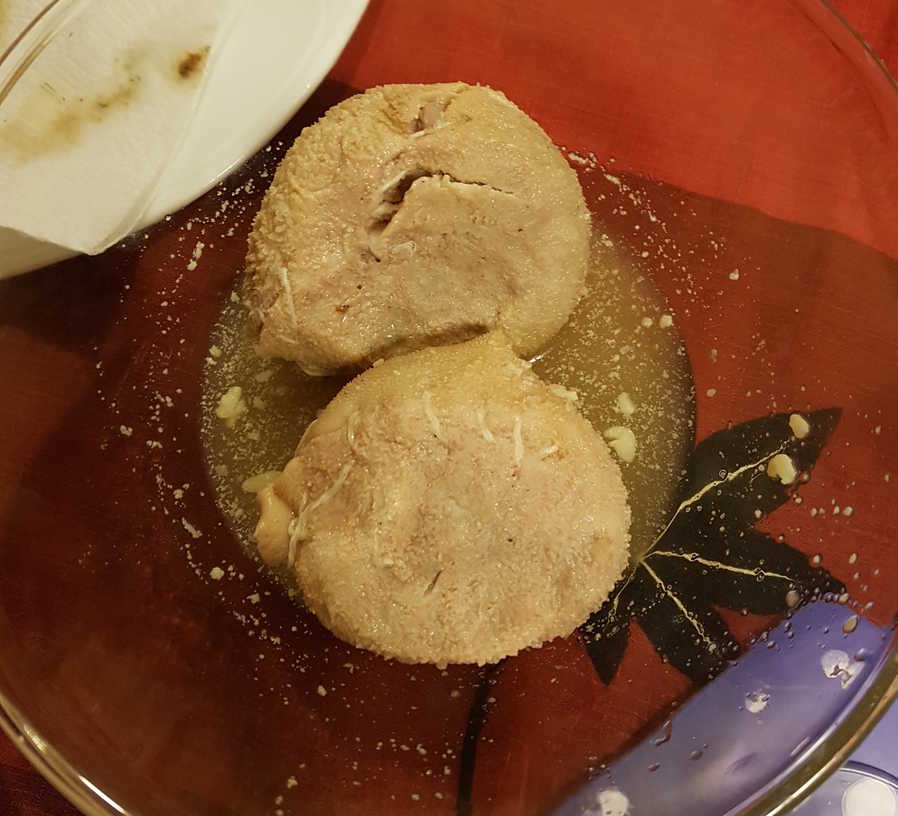


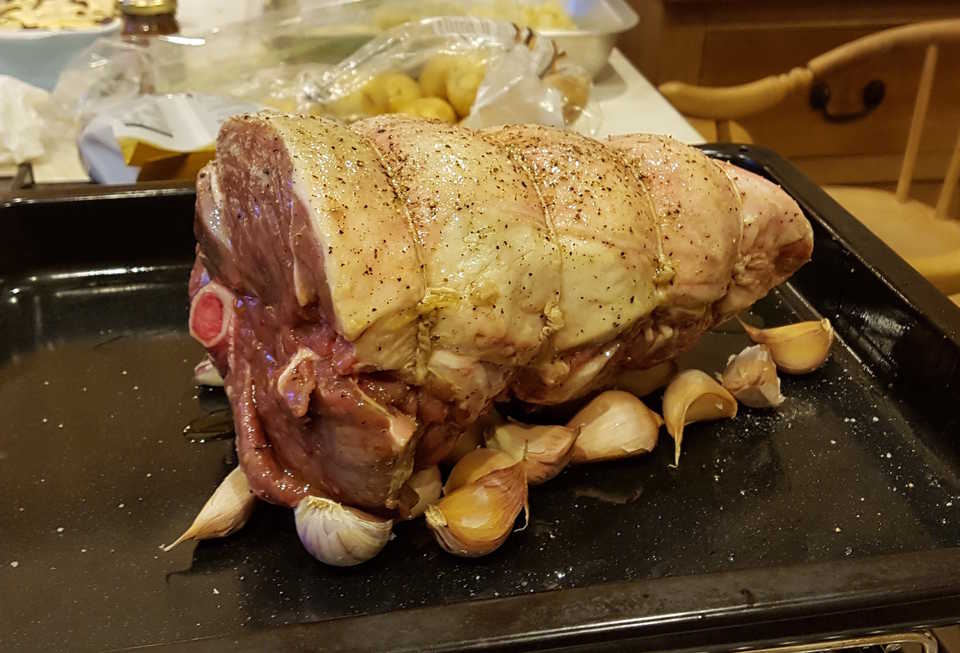
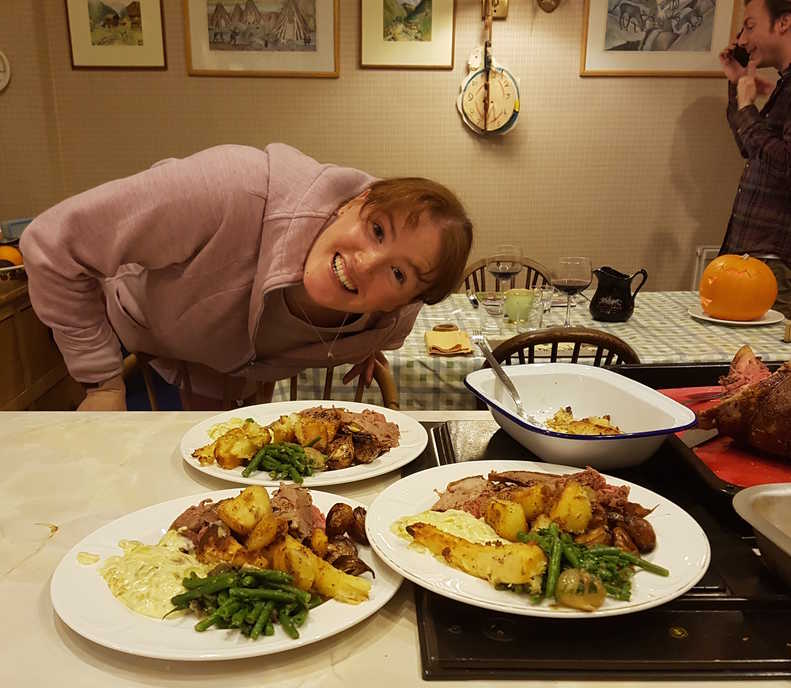
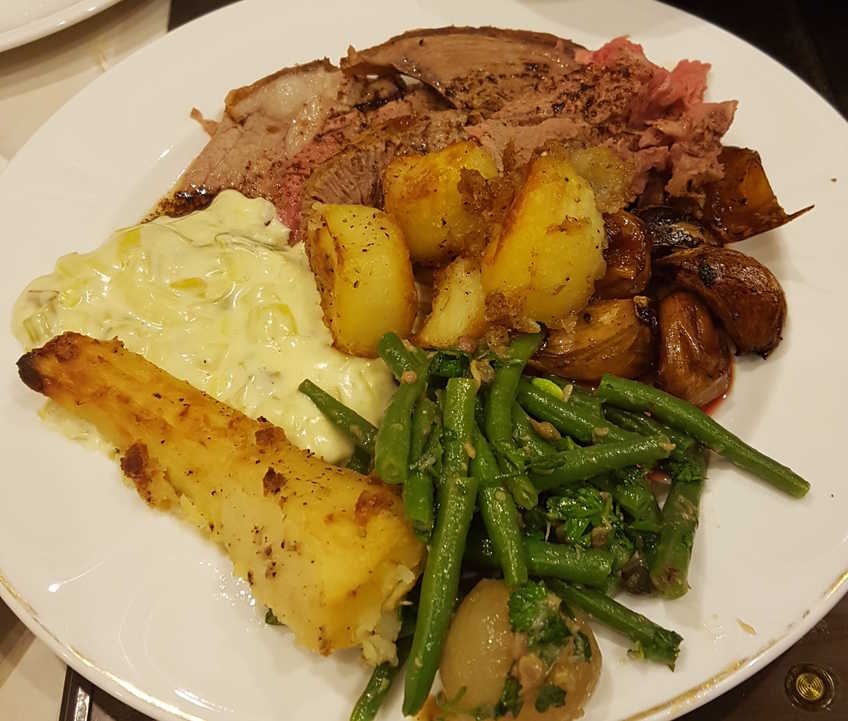
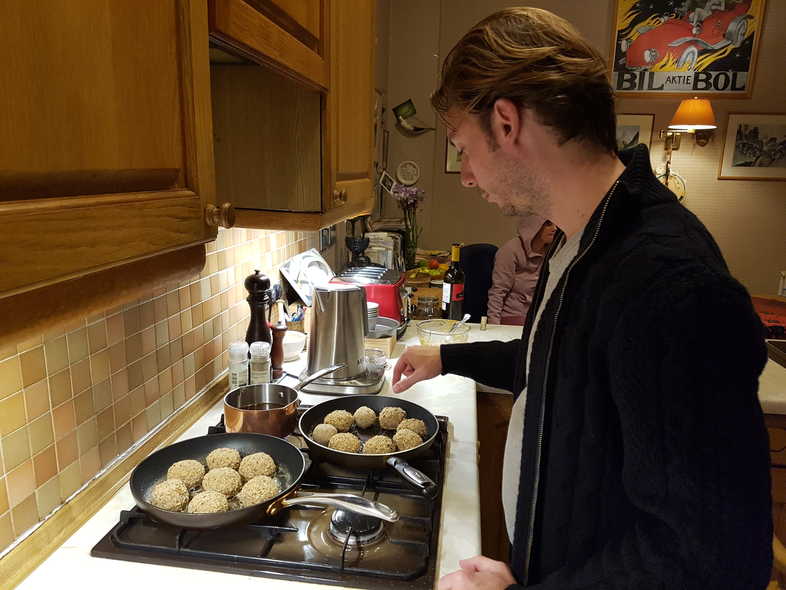
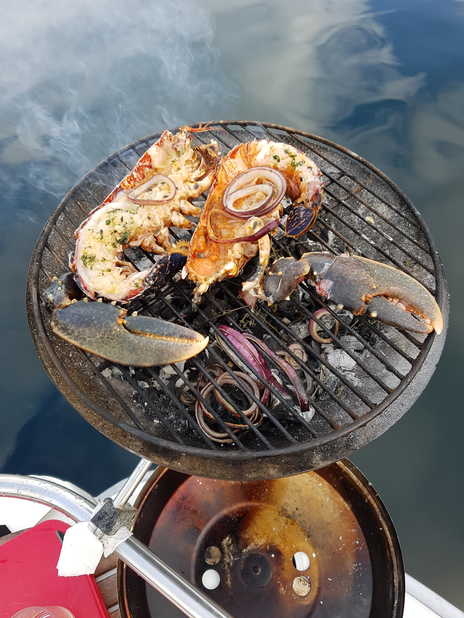







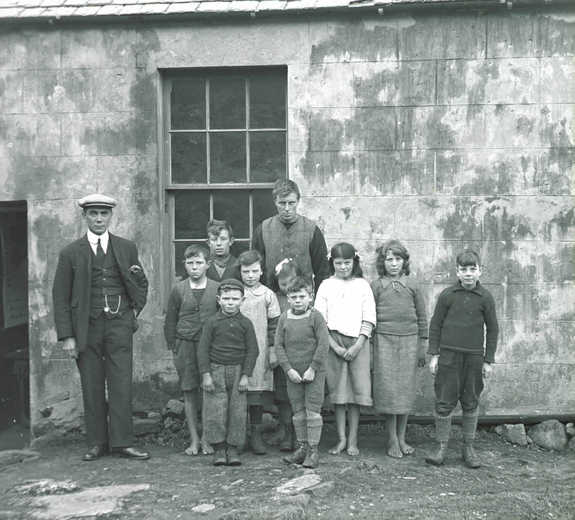
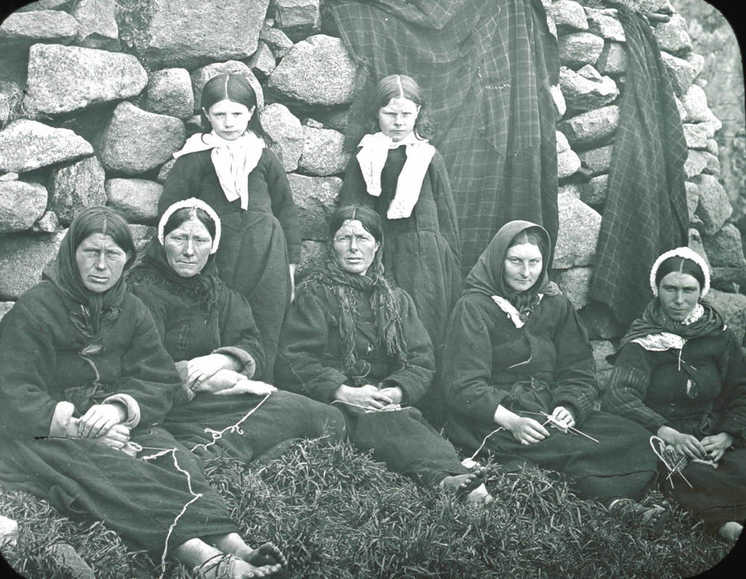

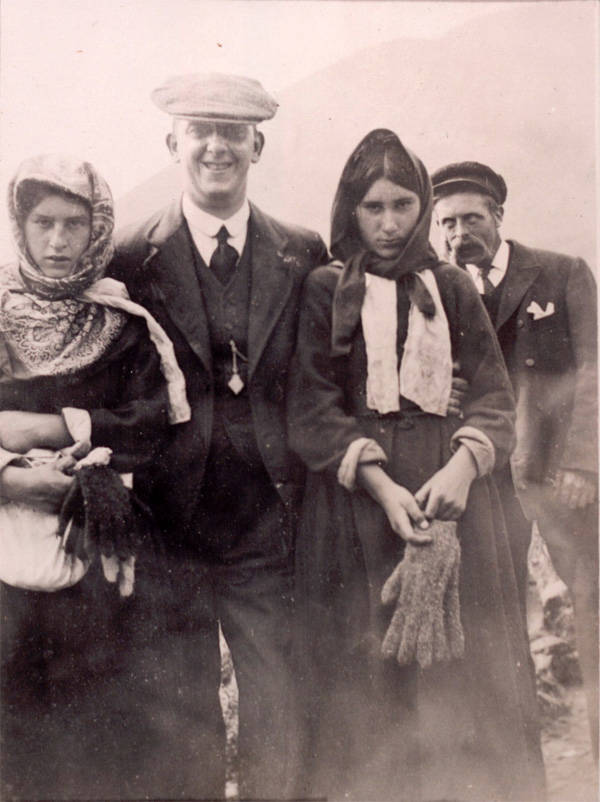
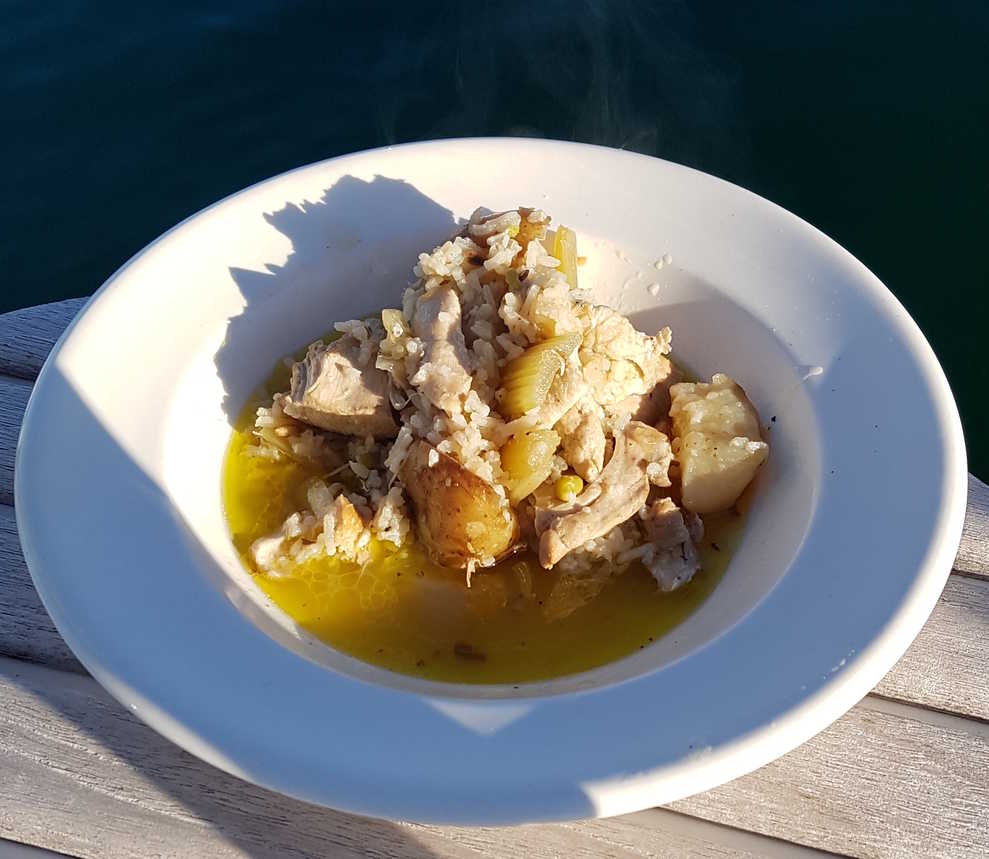
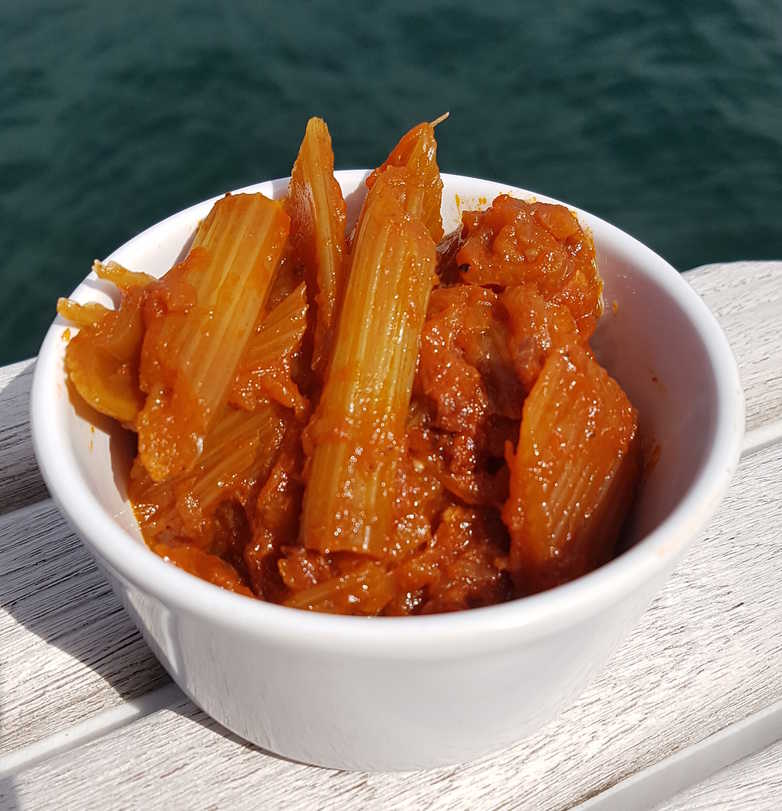
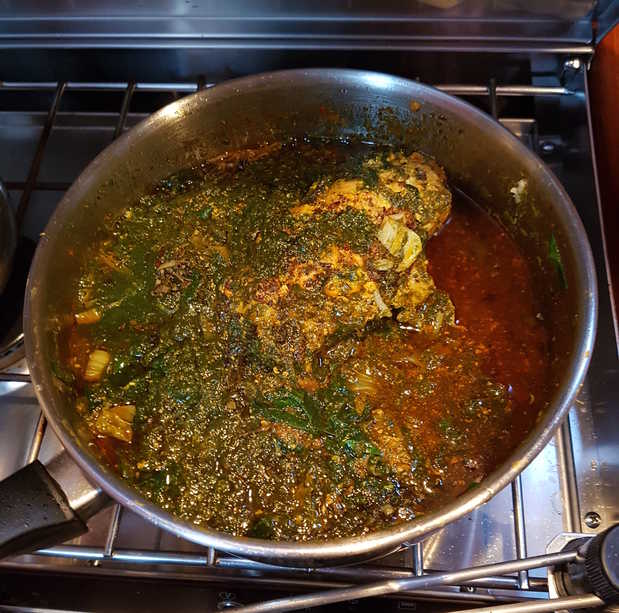
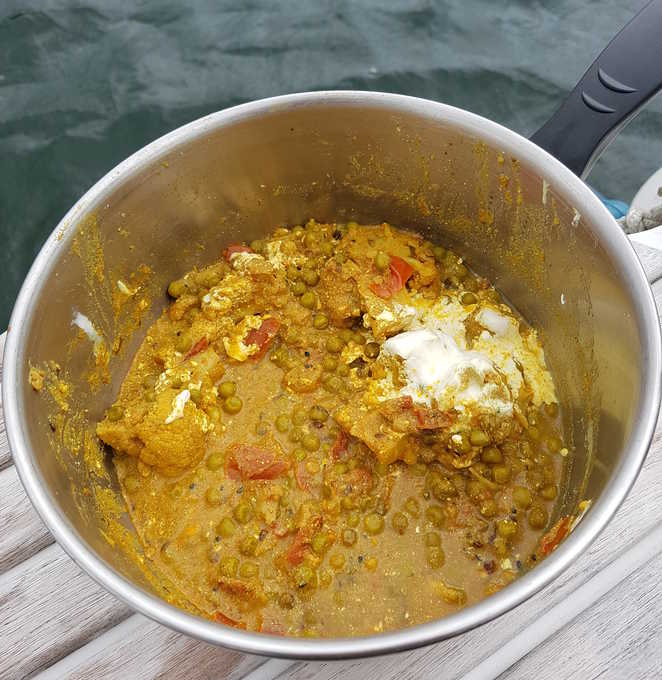
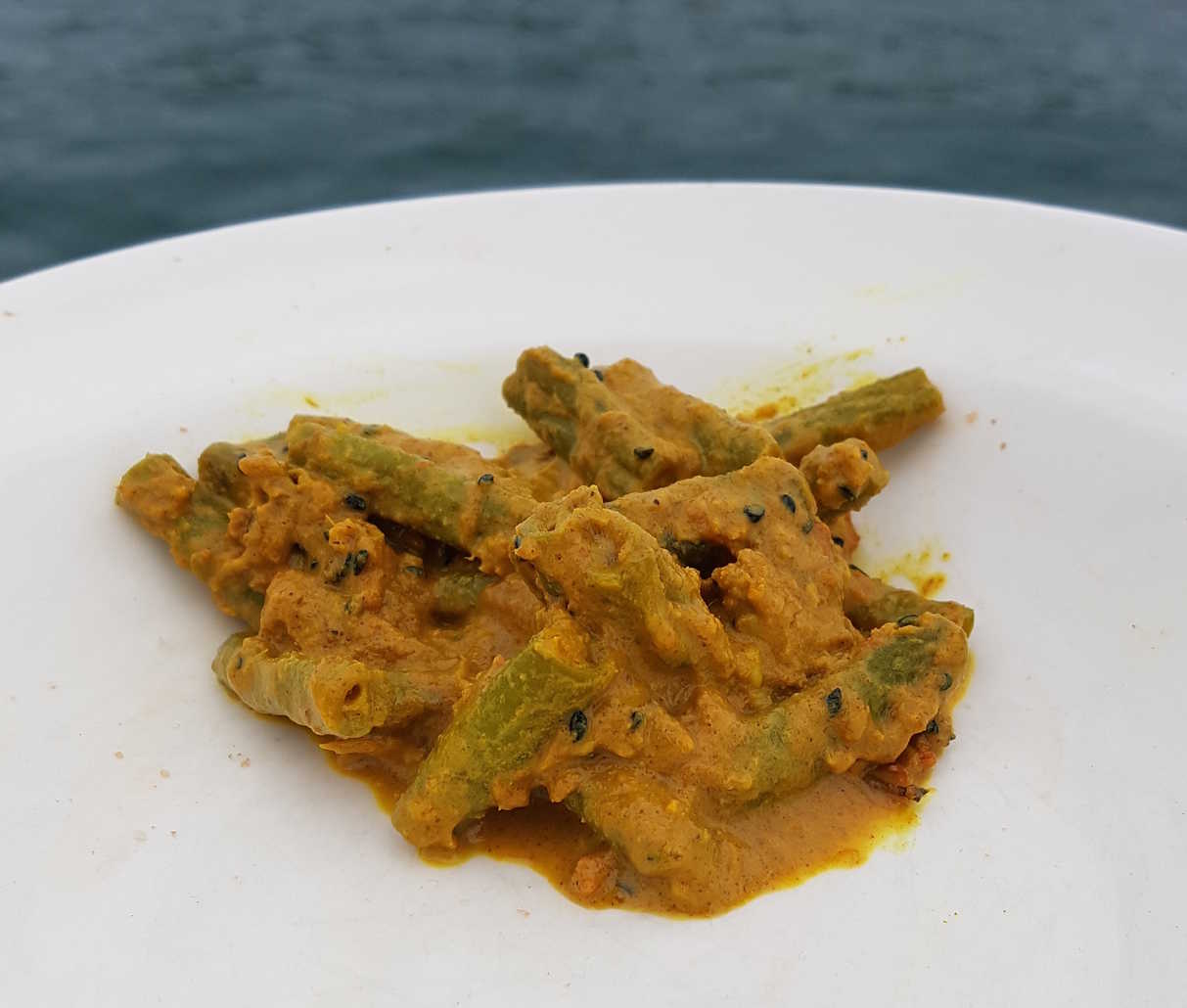
To serve the vol au vents from cold, you can warm the casings in the oven at 200°C either filled or empty, in which case carefully reheat the filling separately on the stove-top without (anywhere near) boiling it.